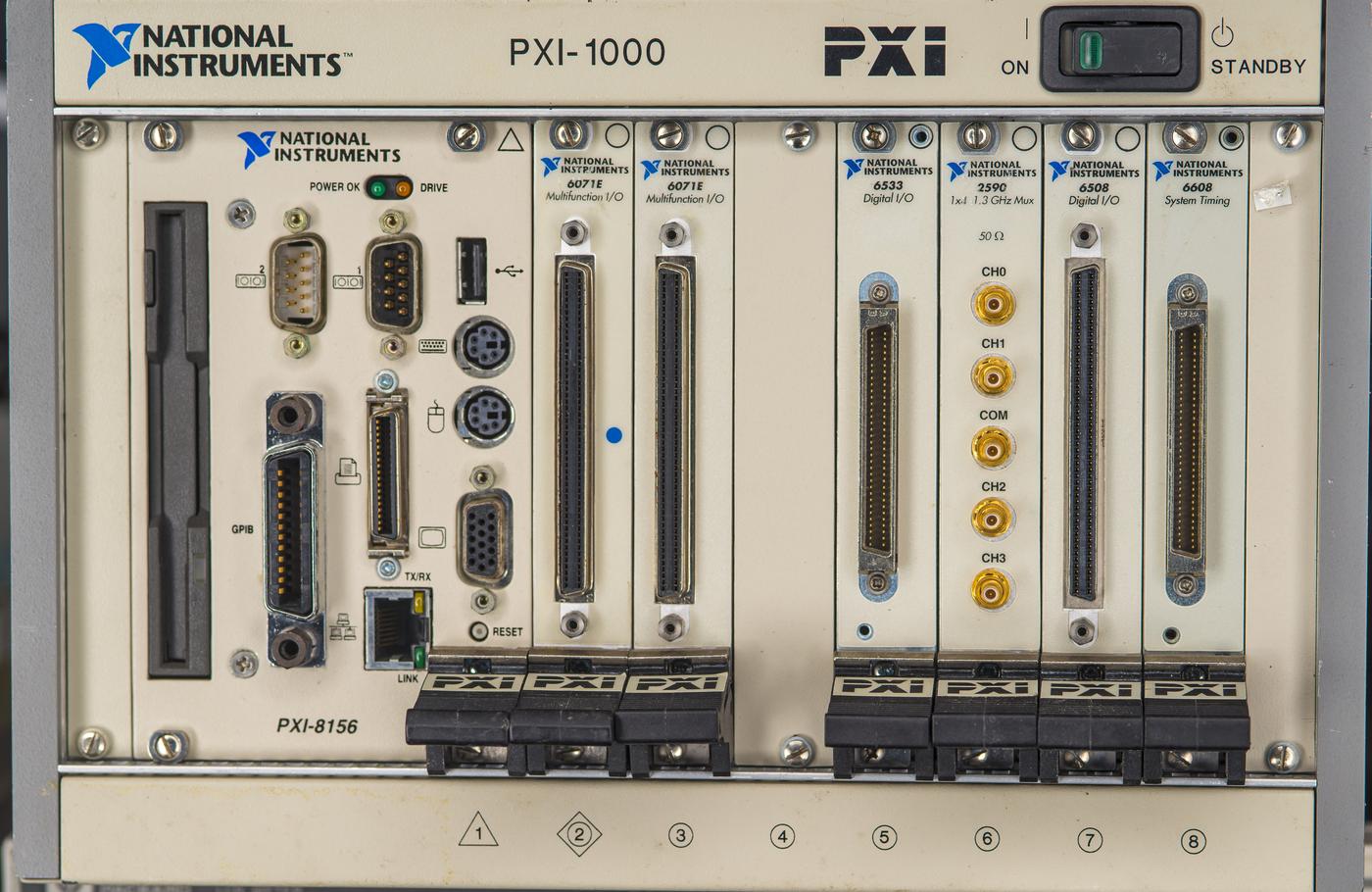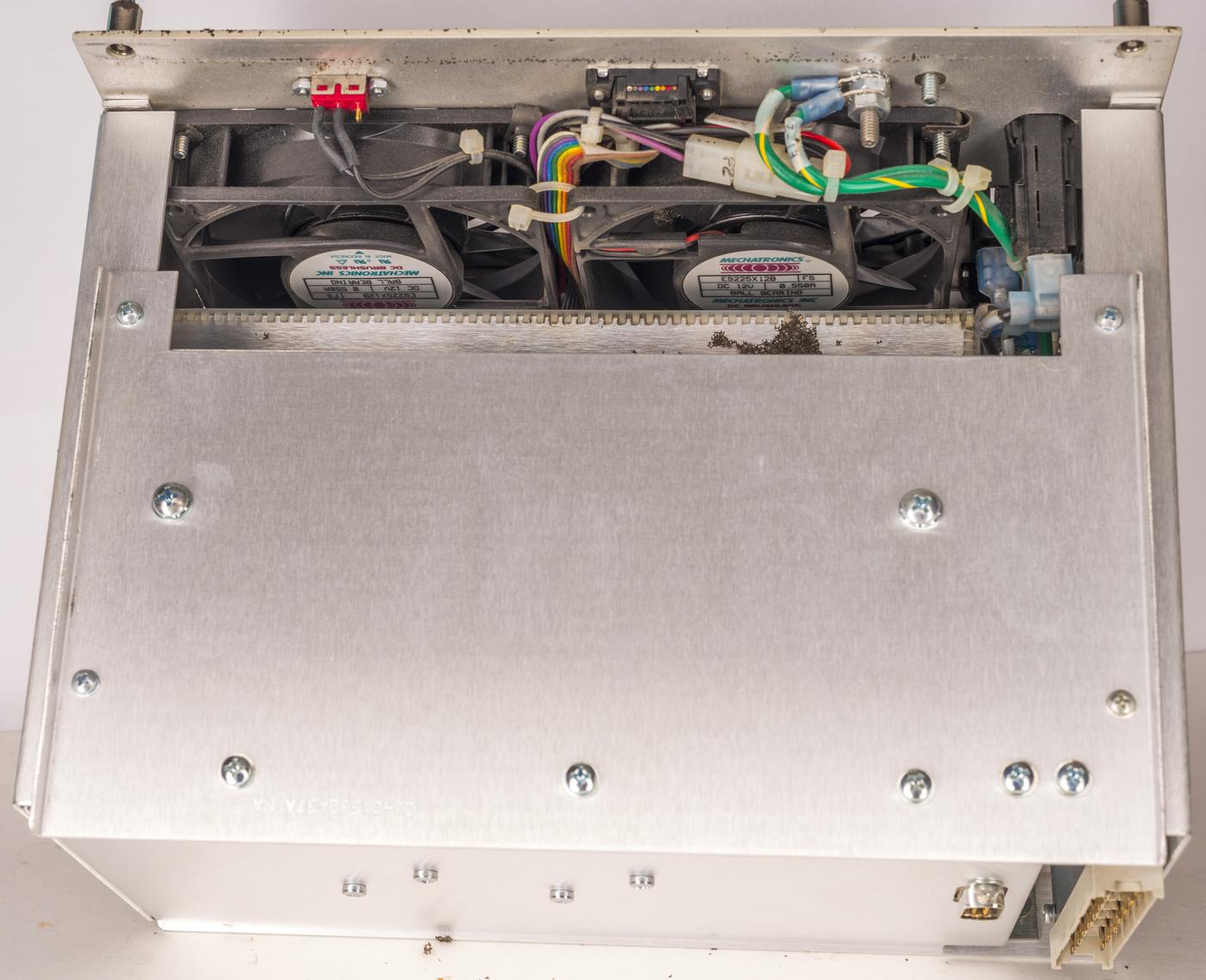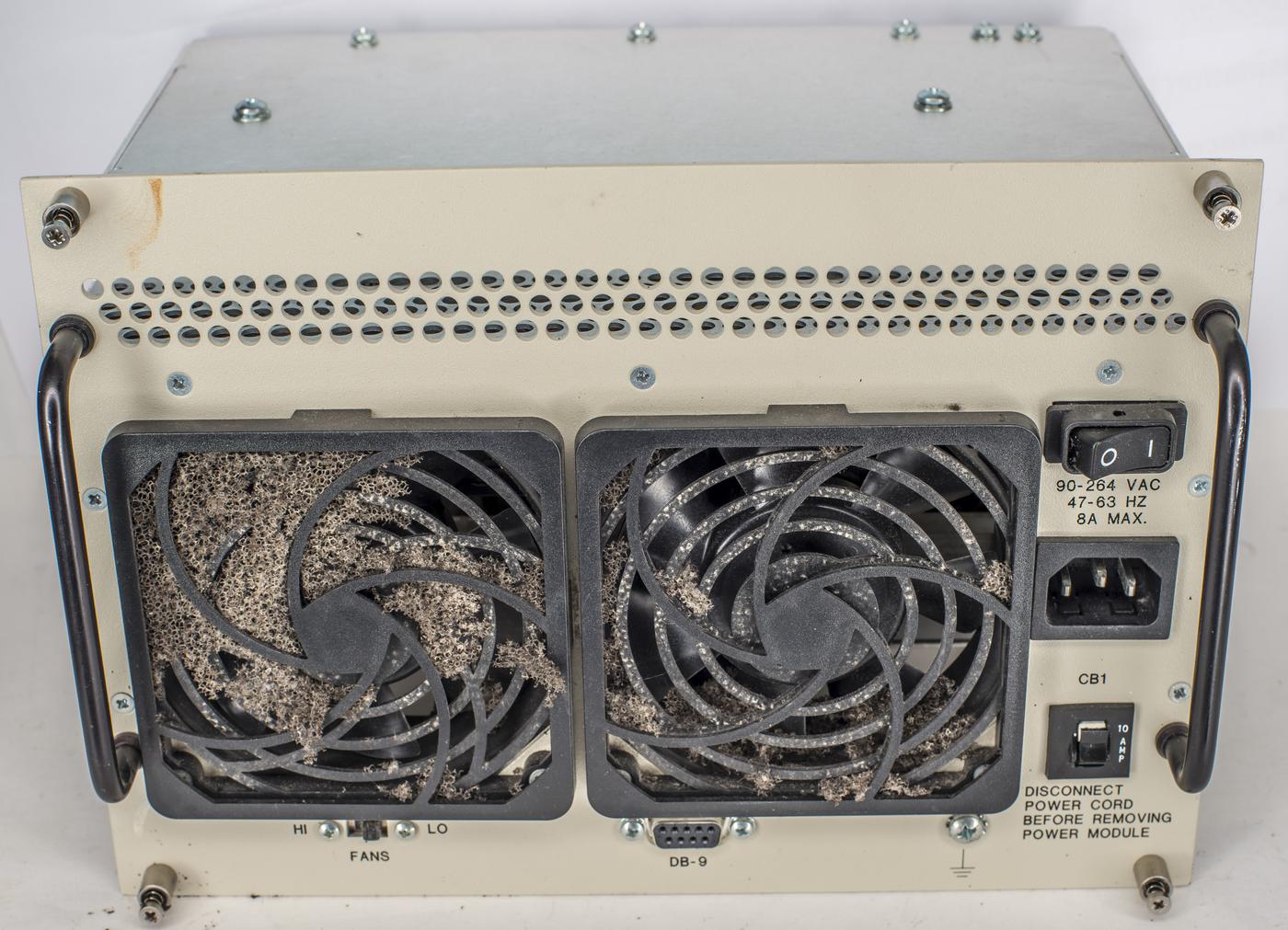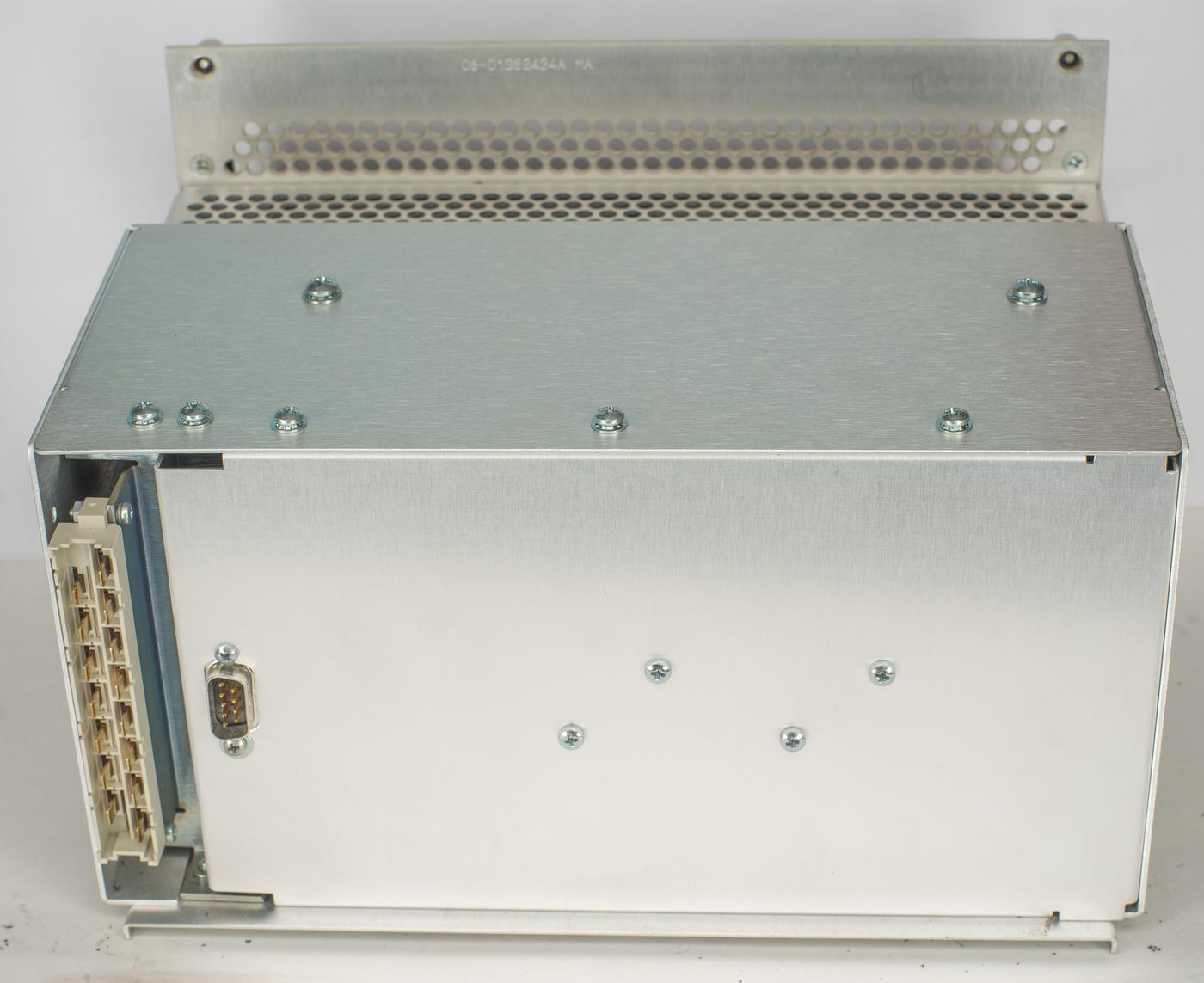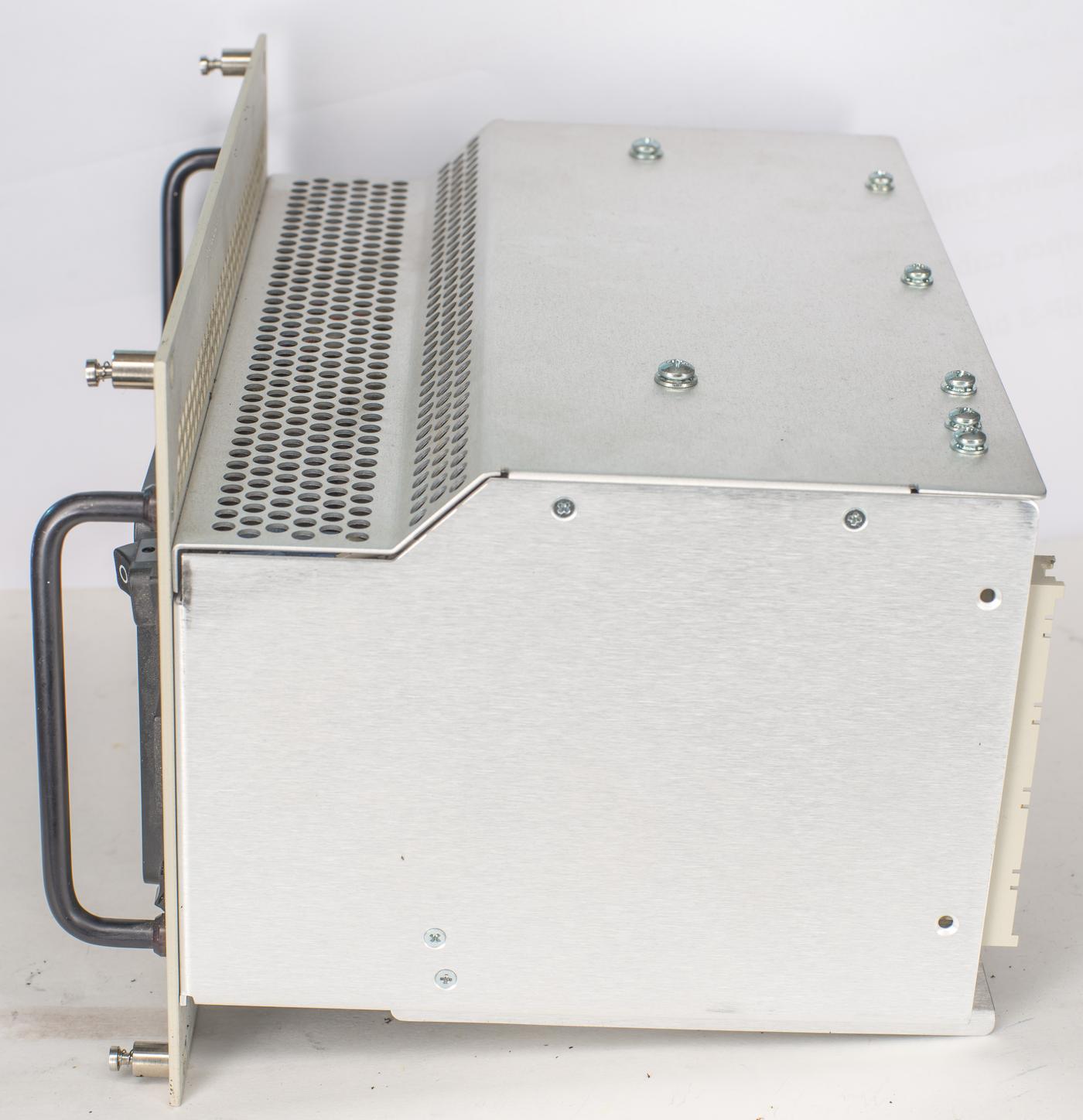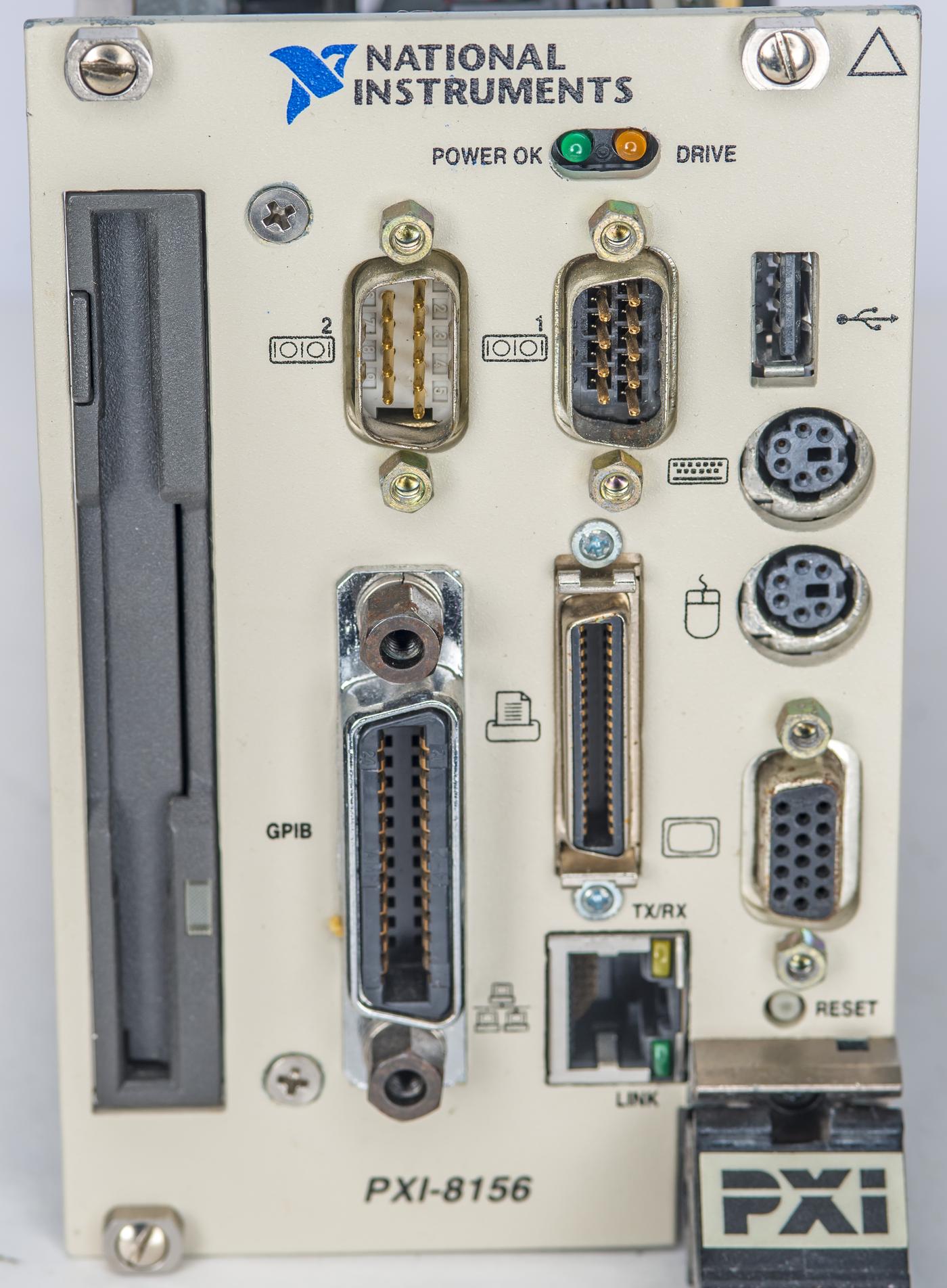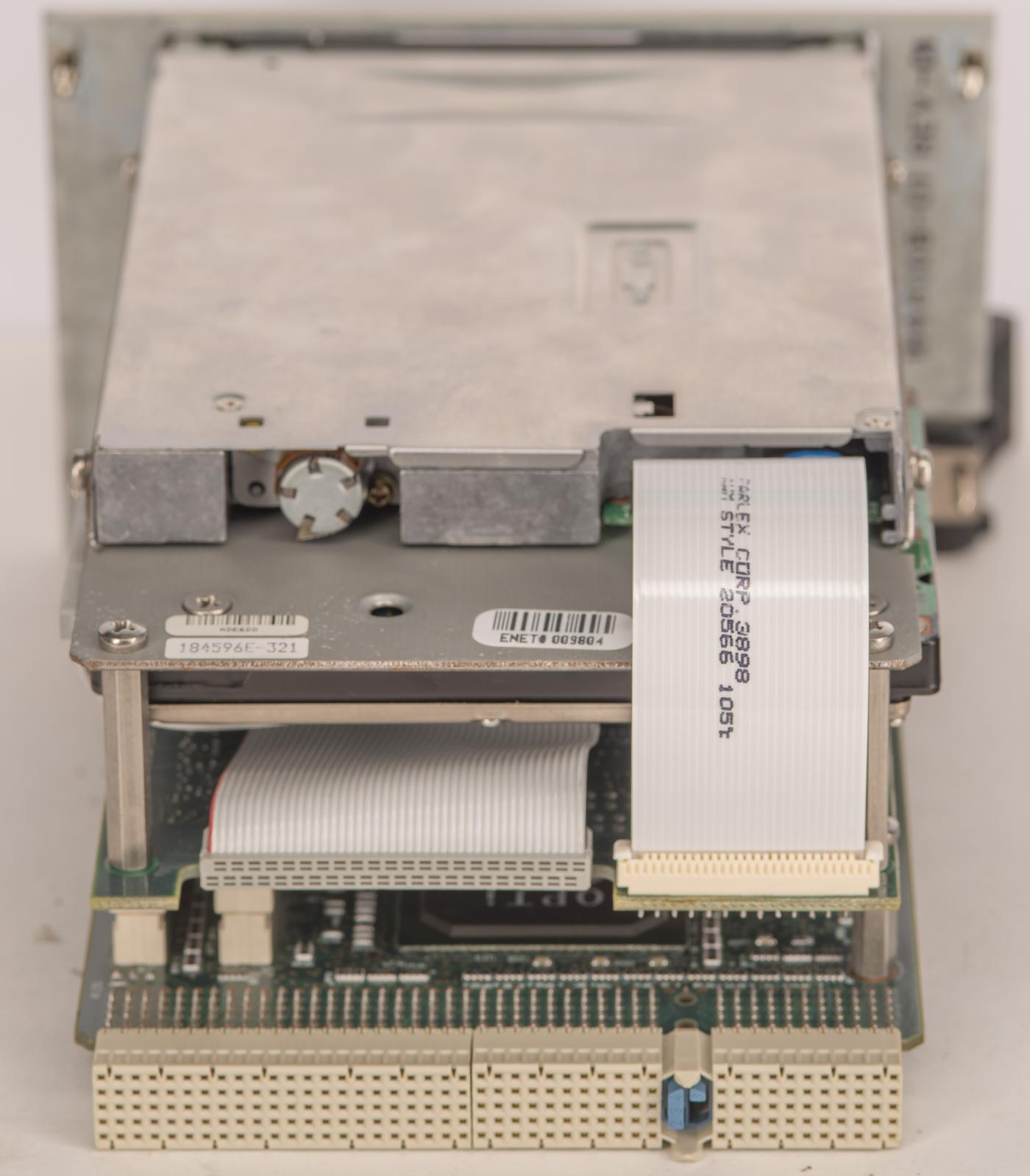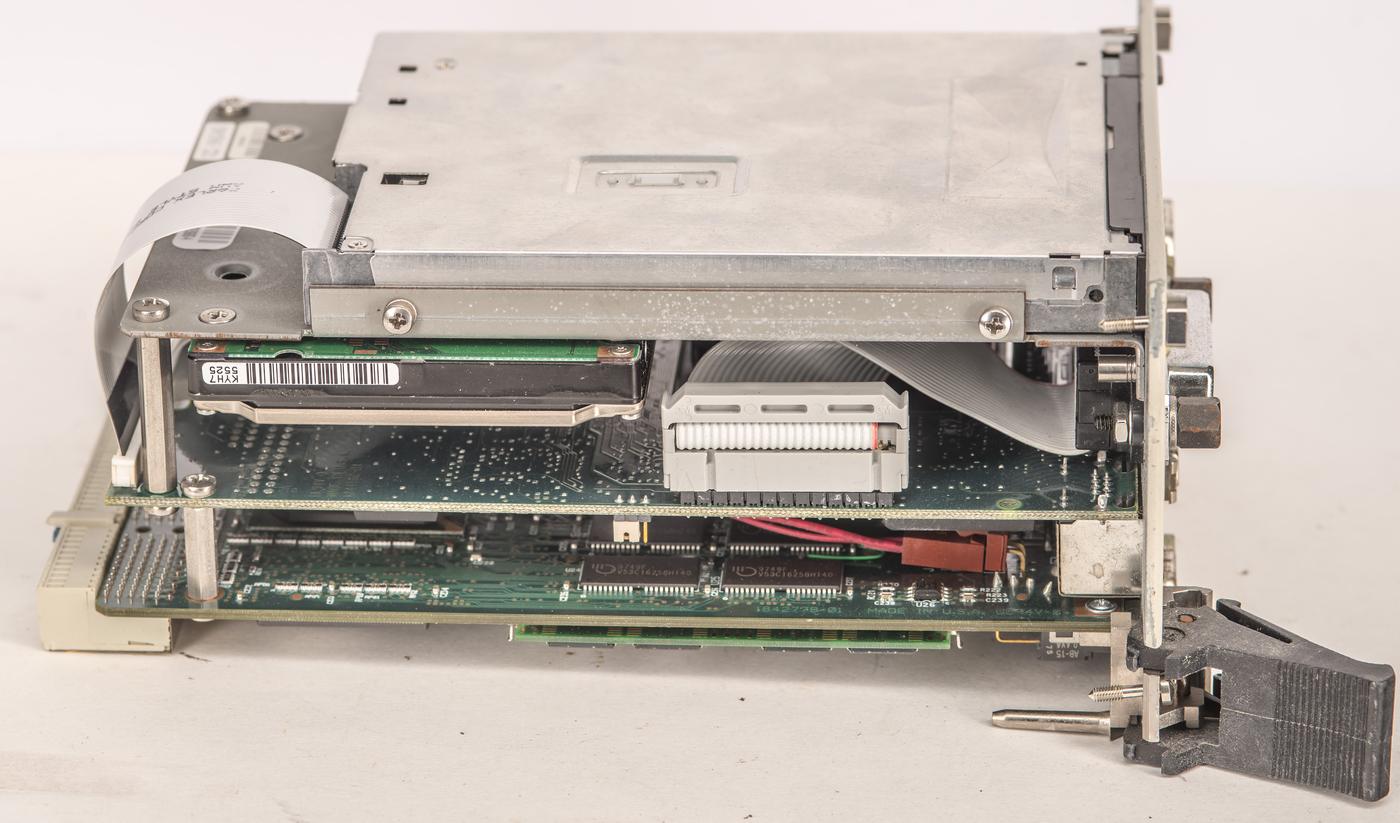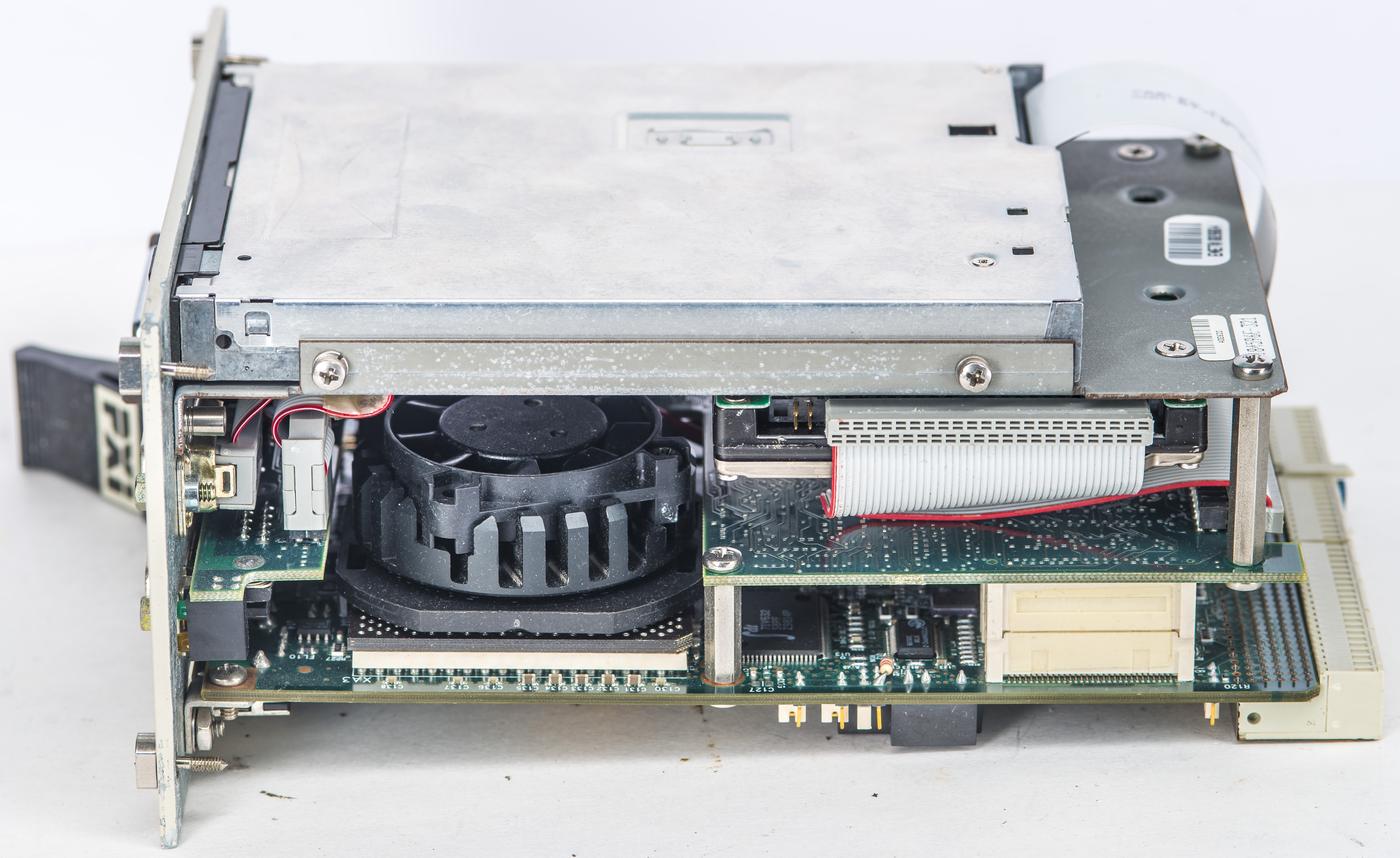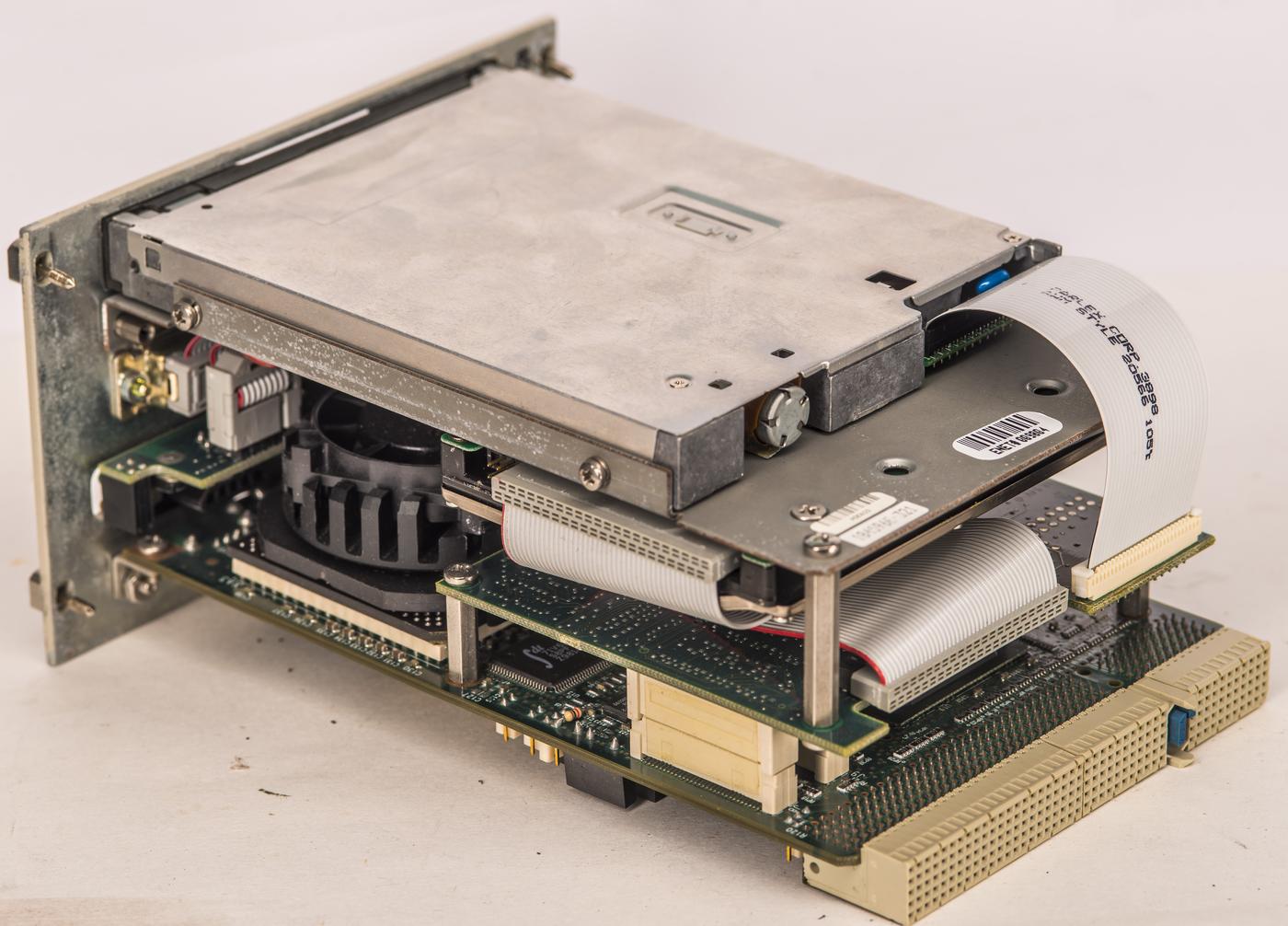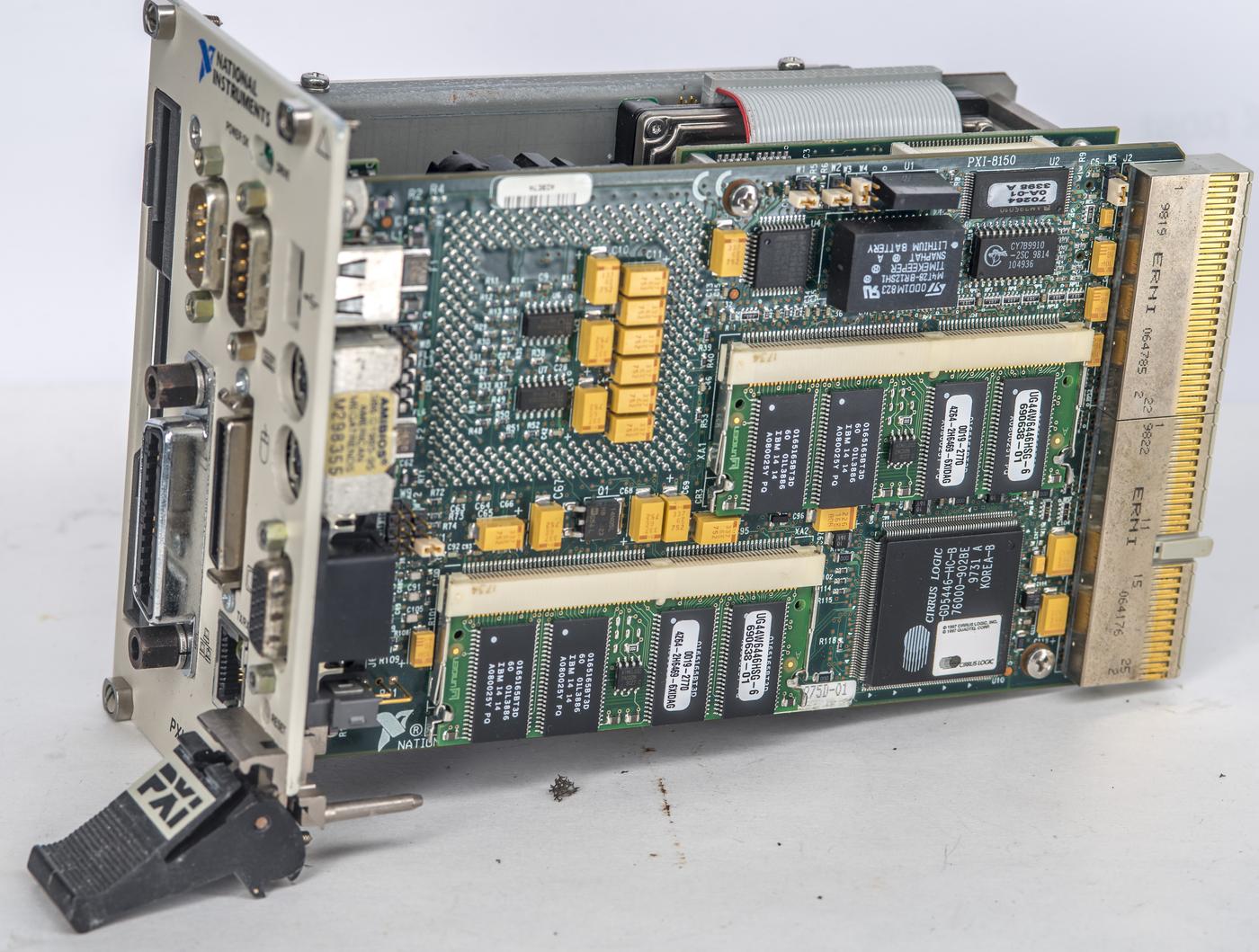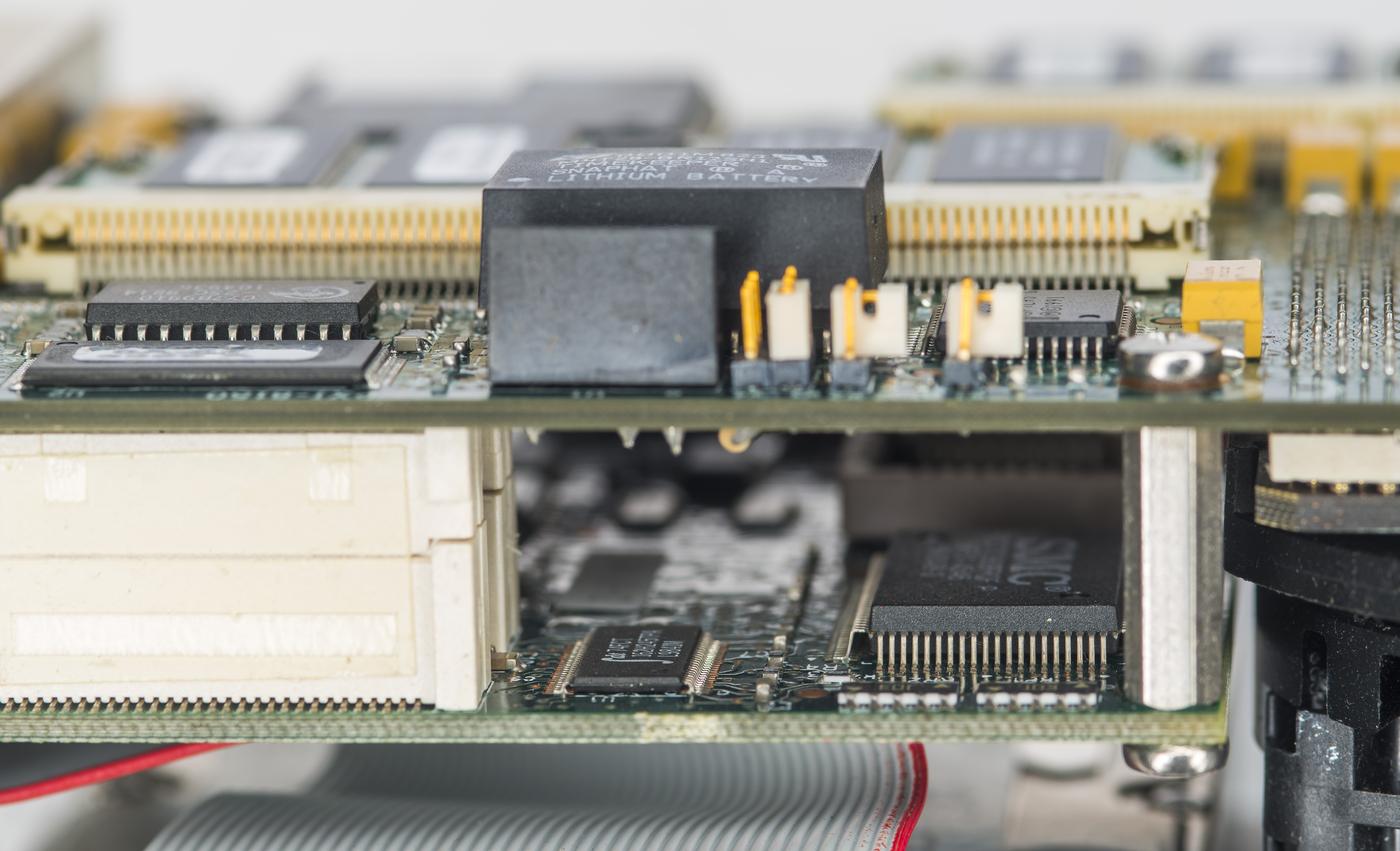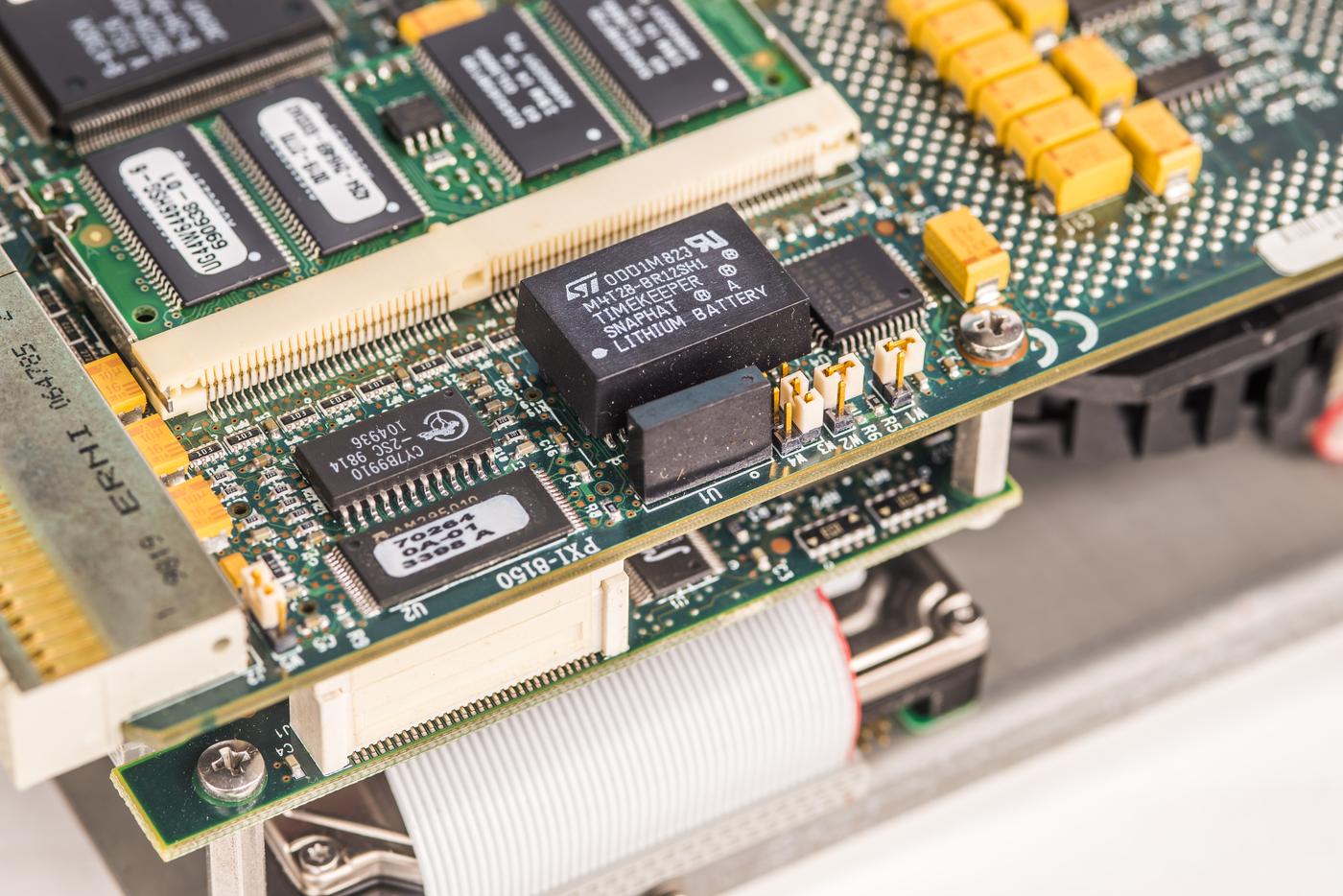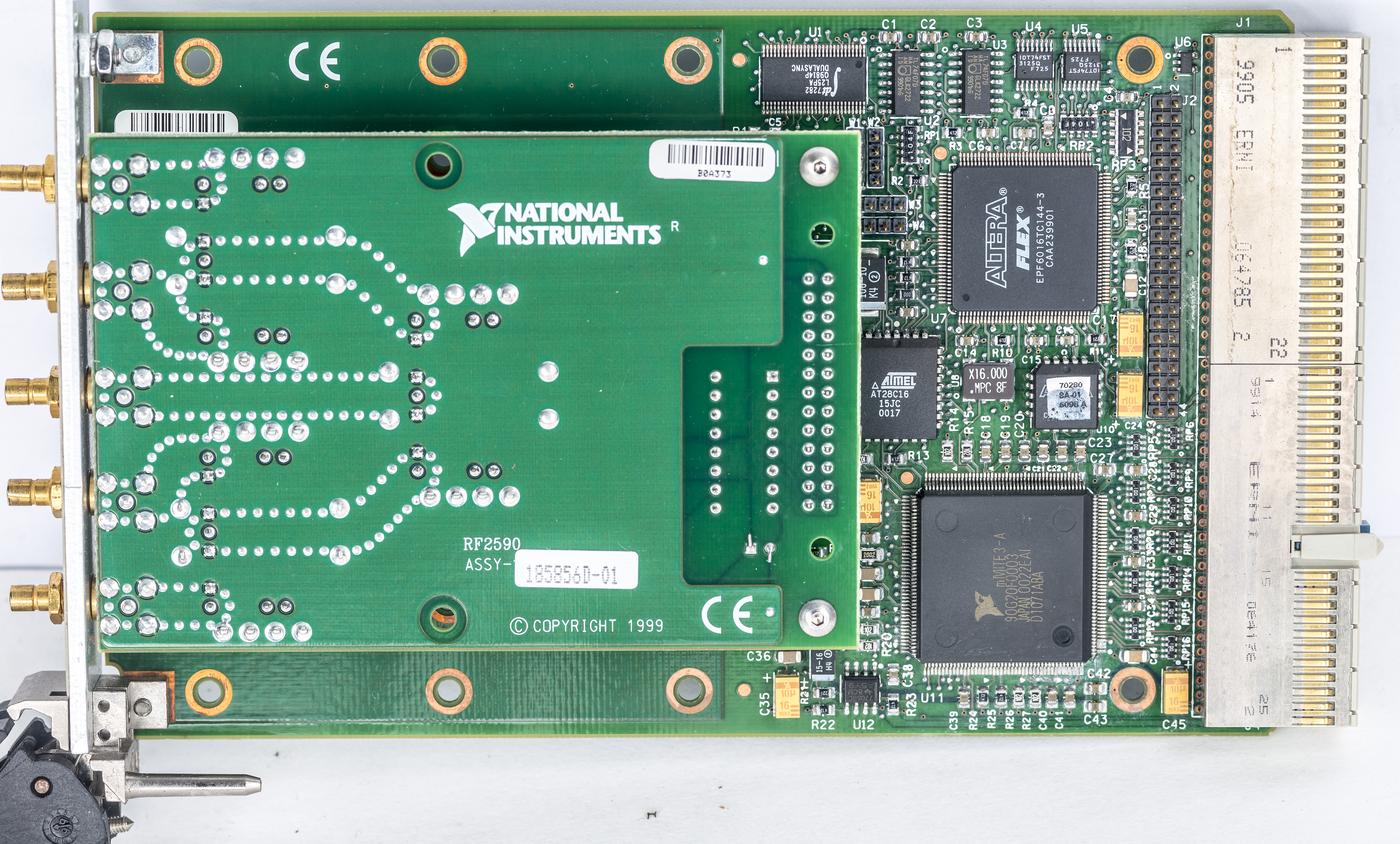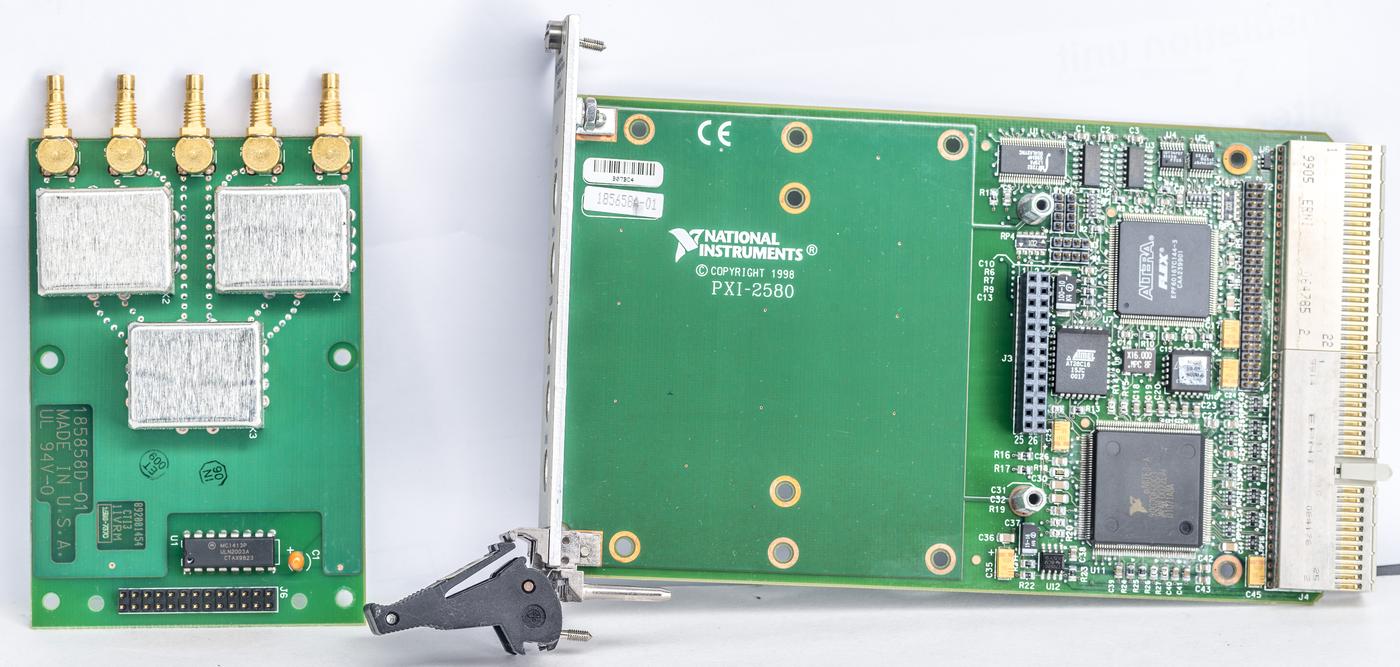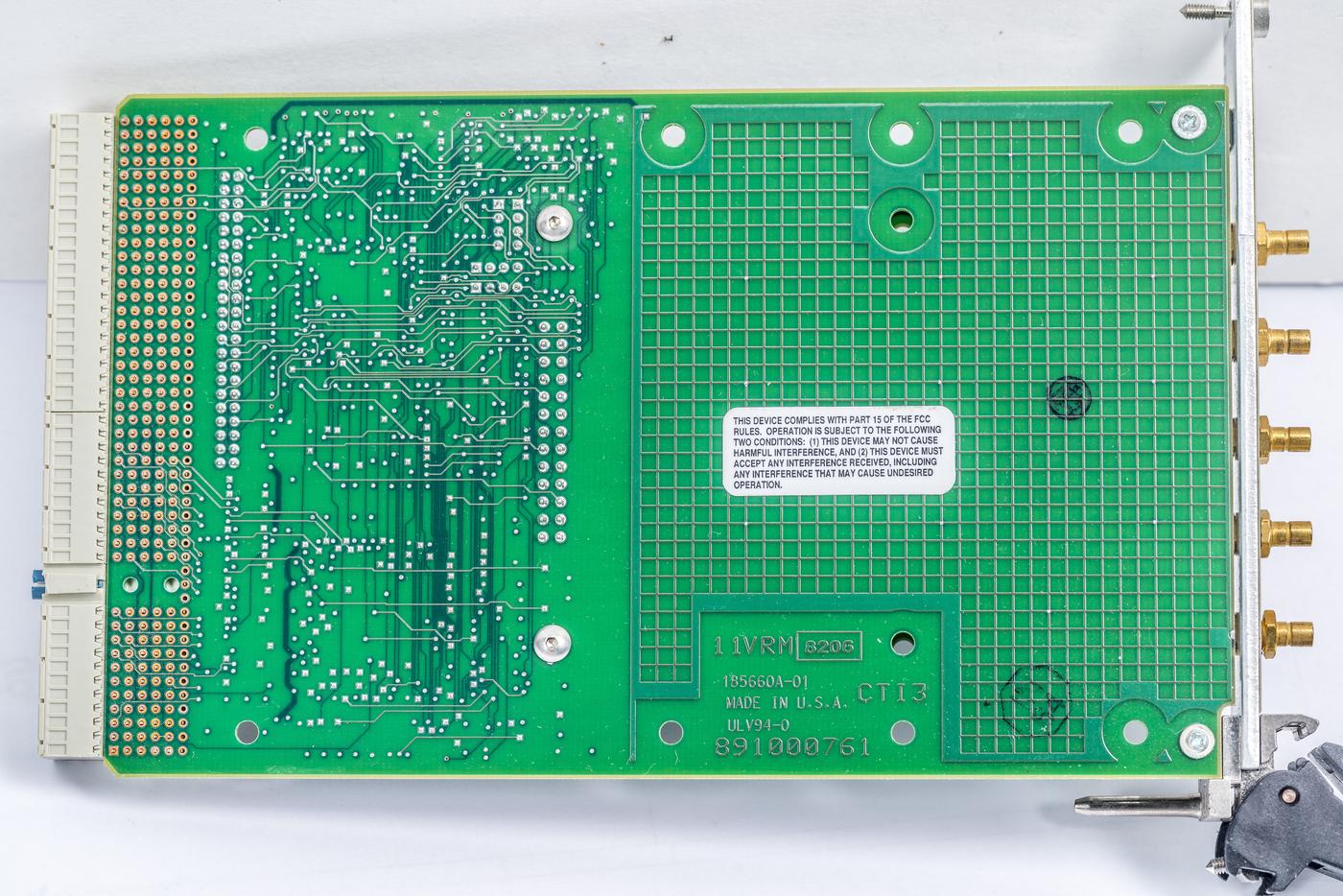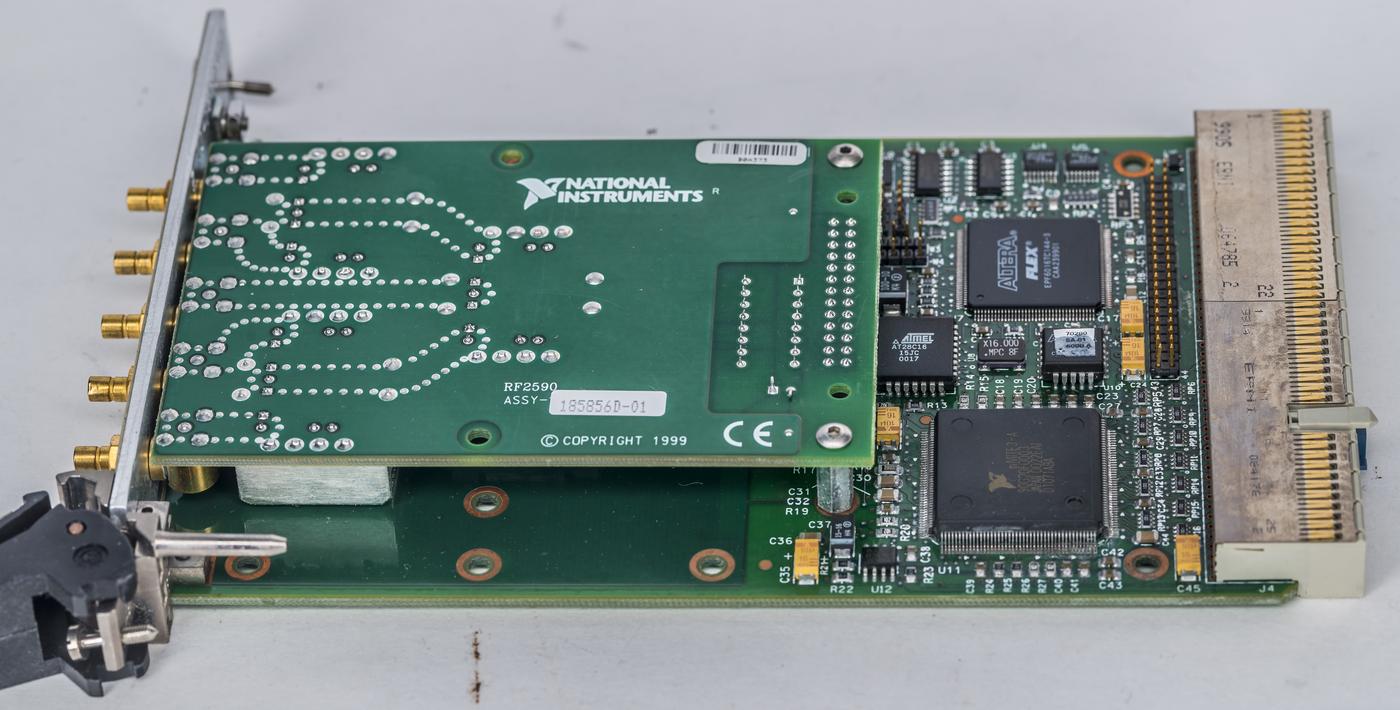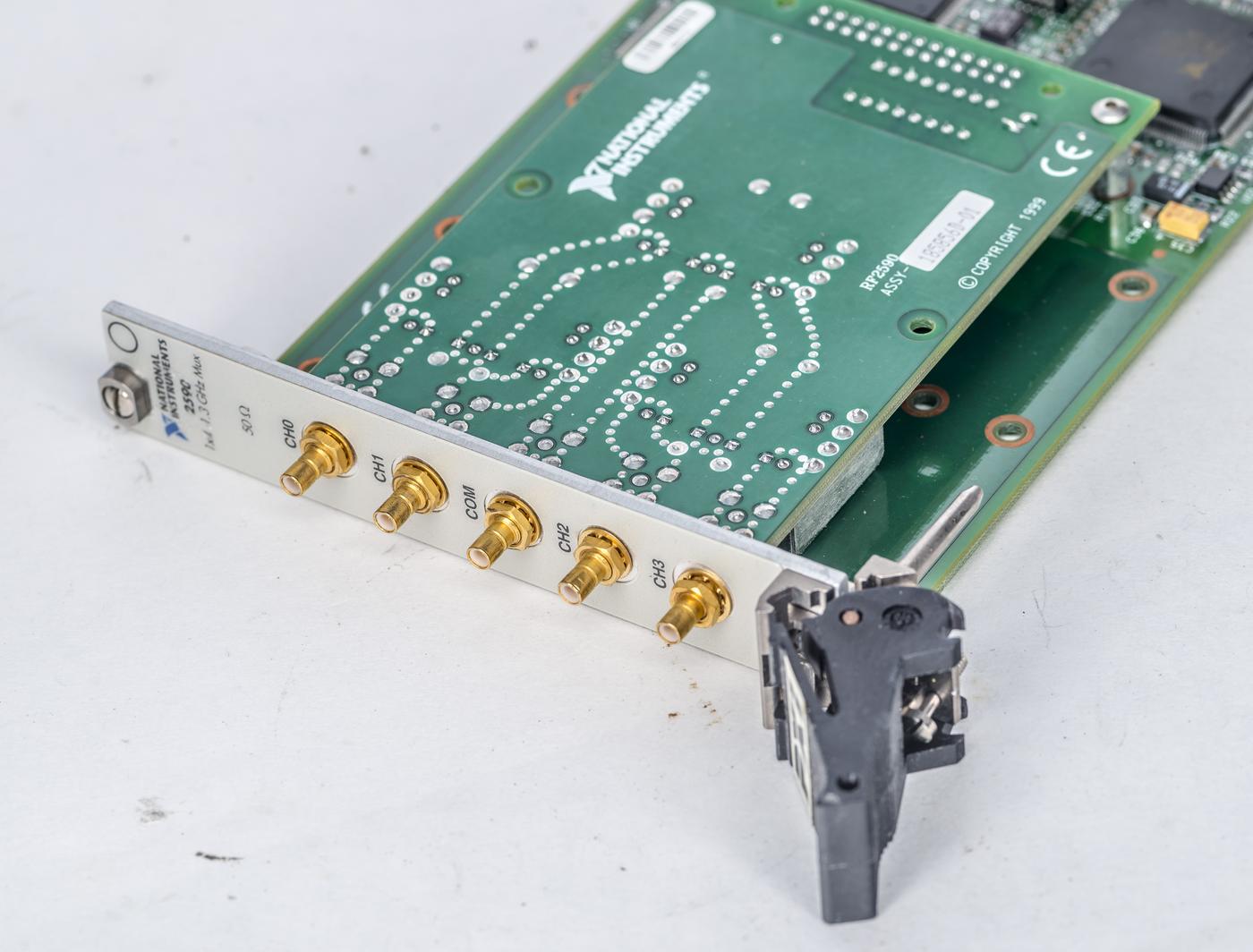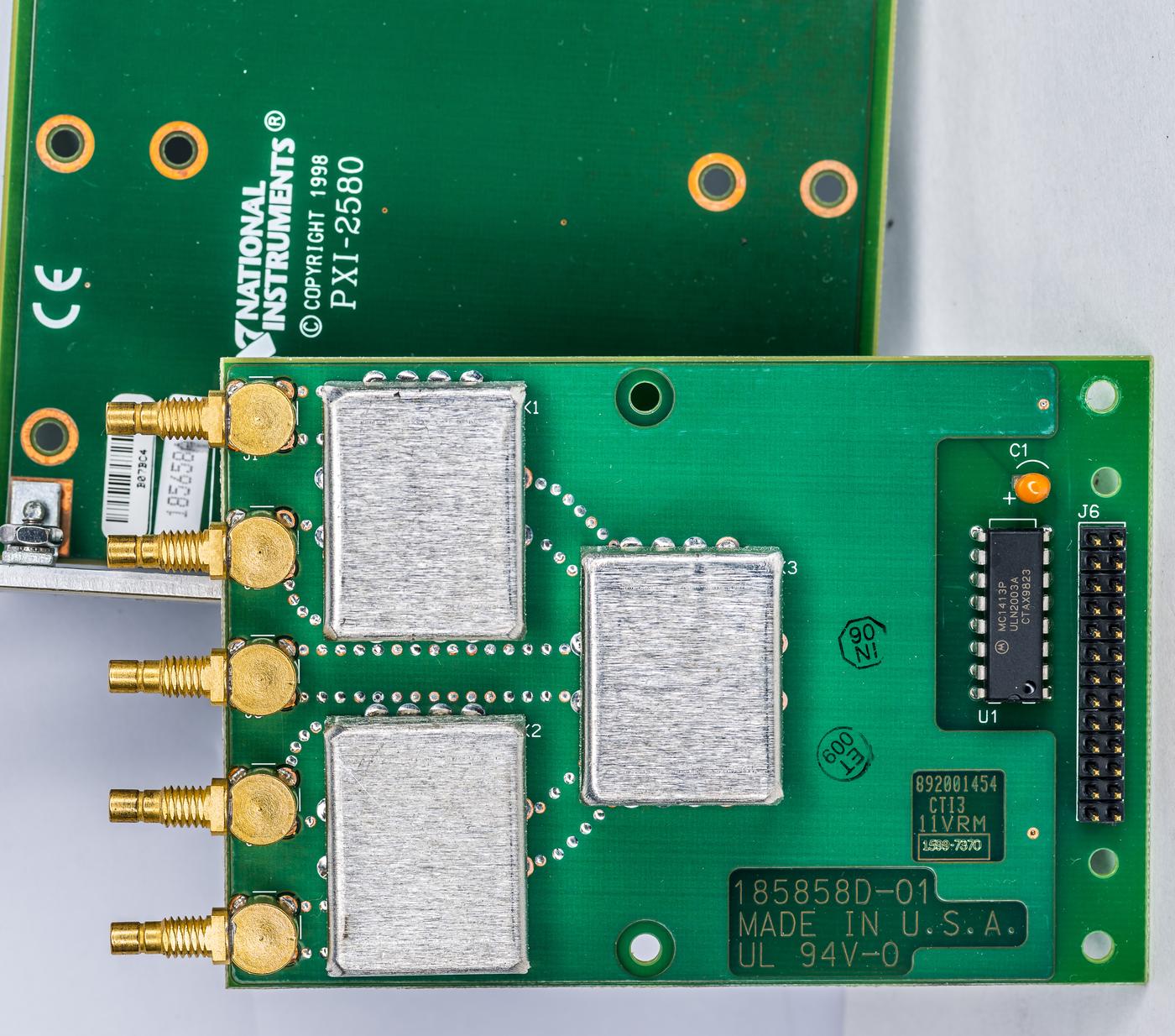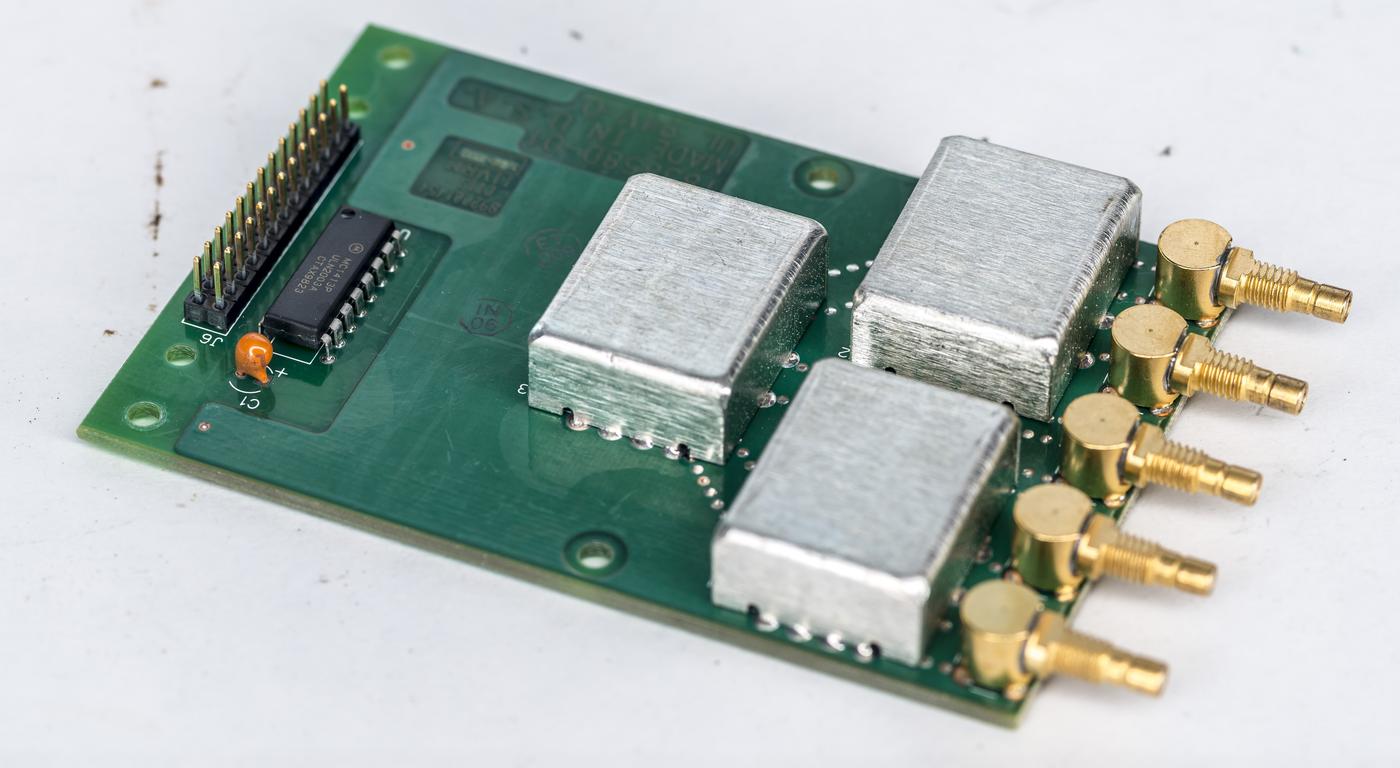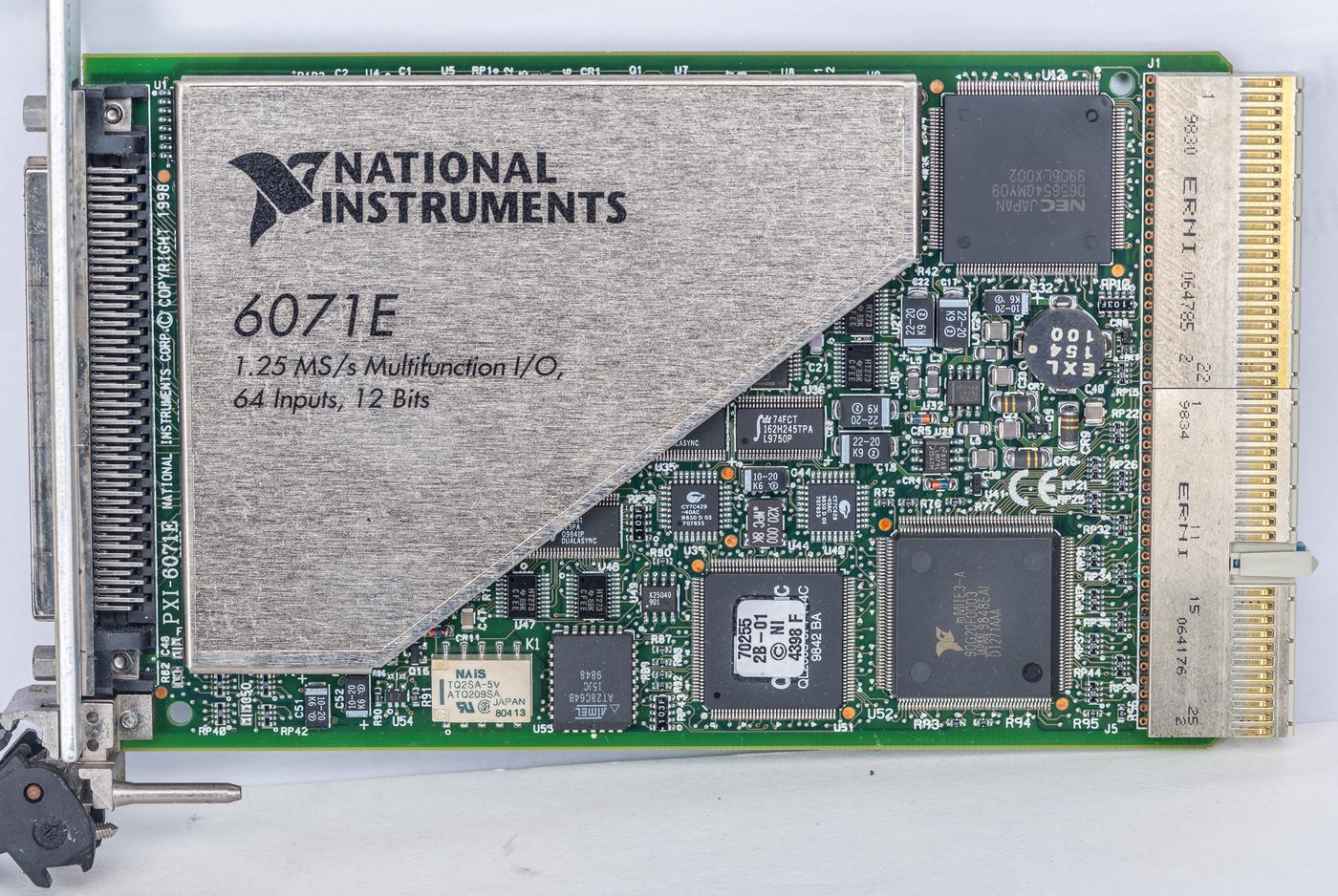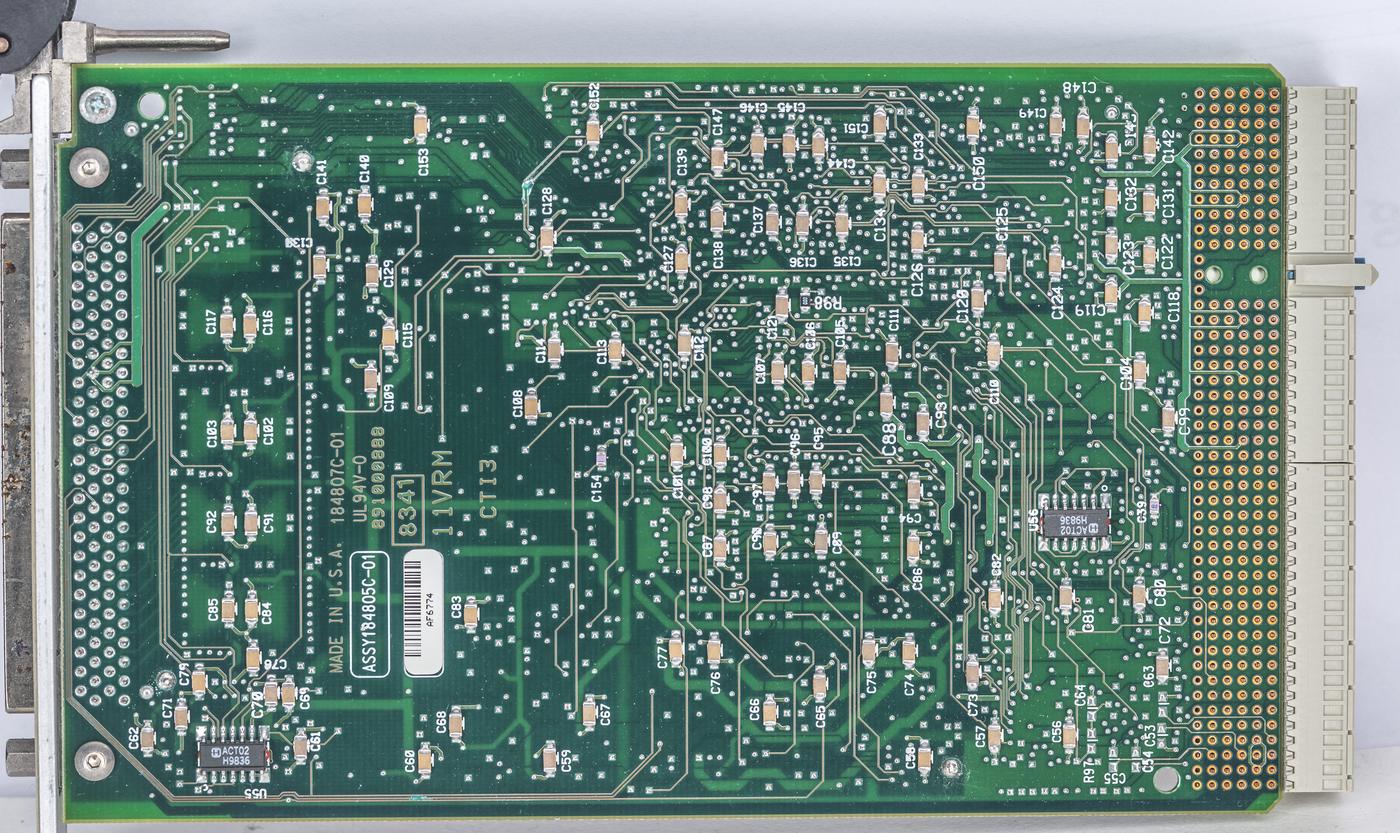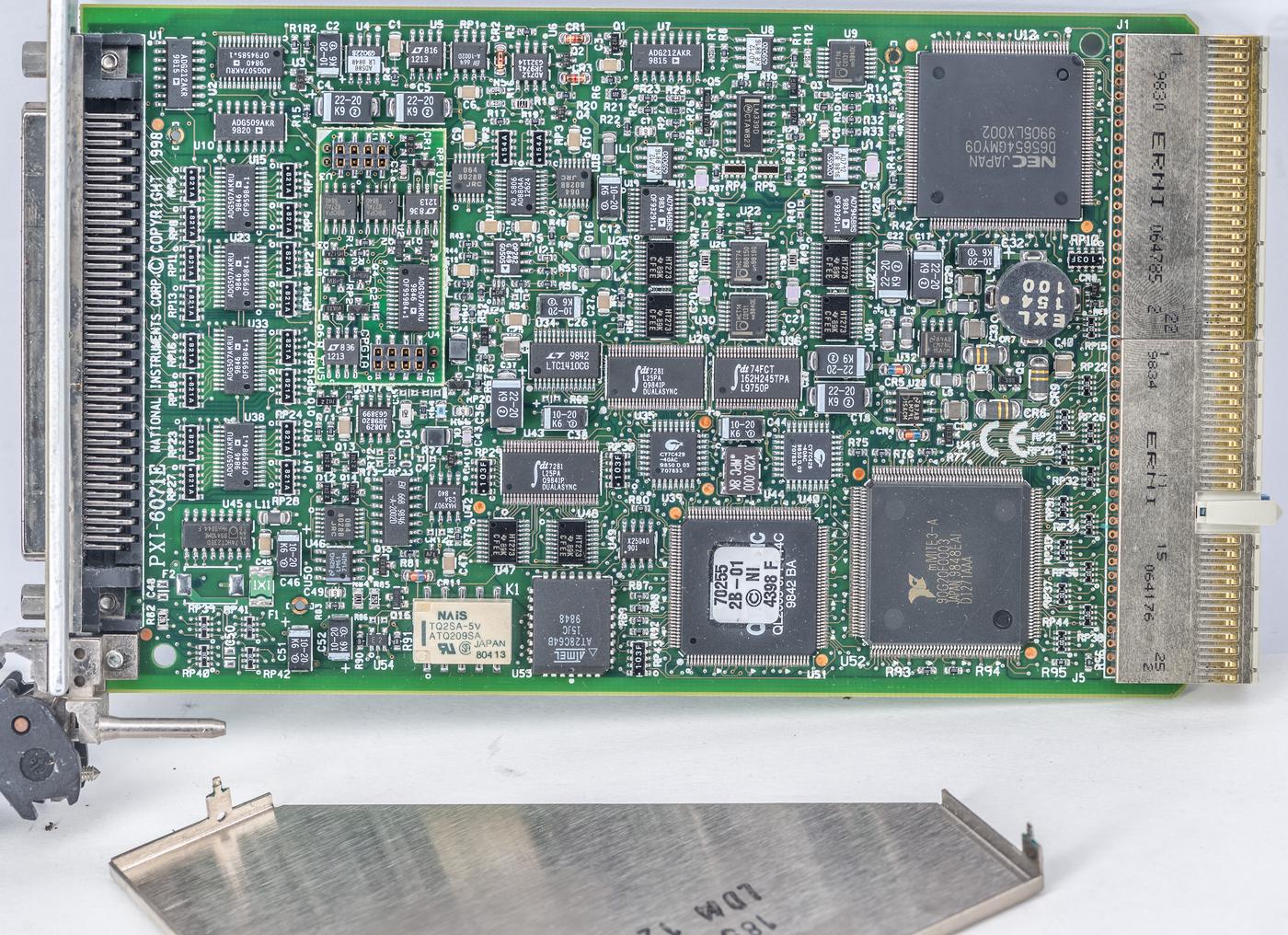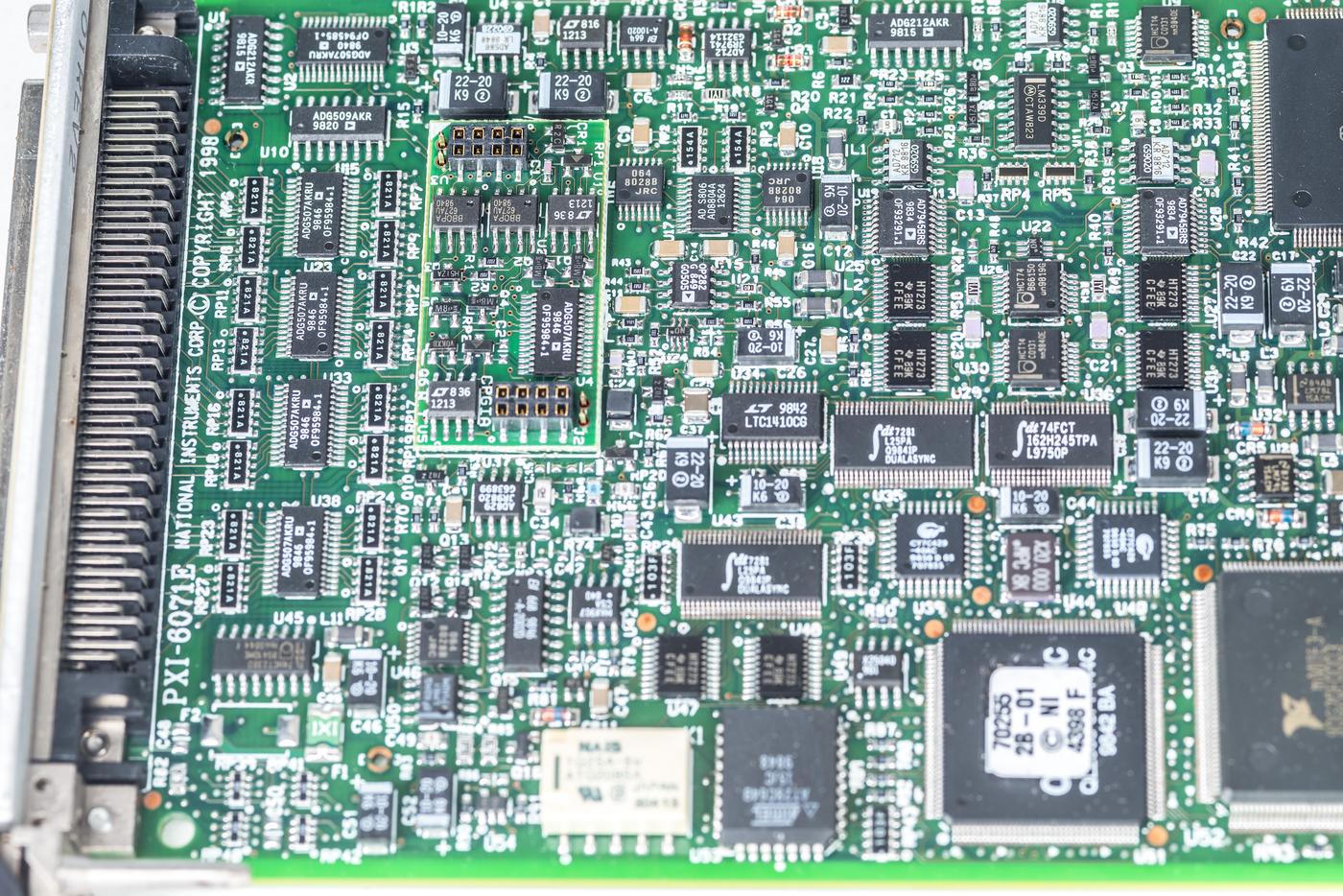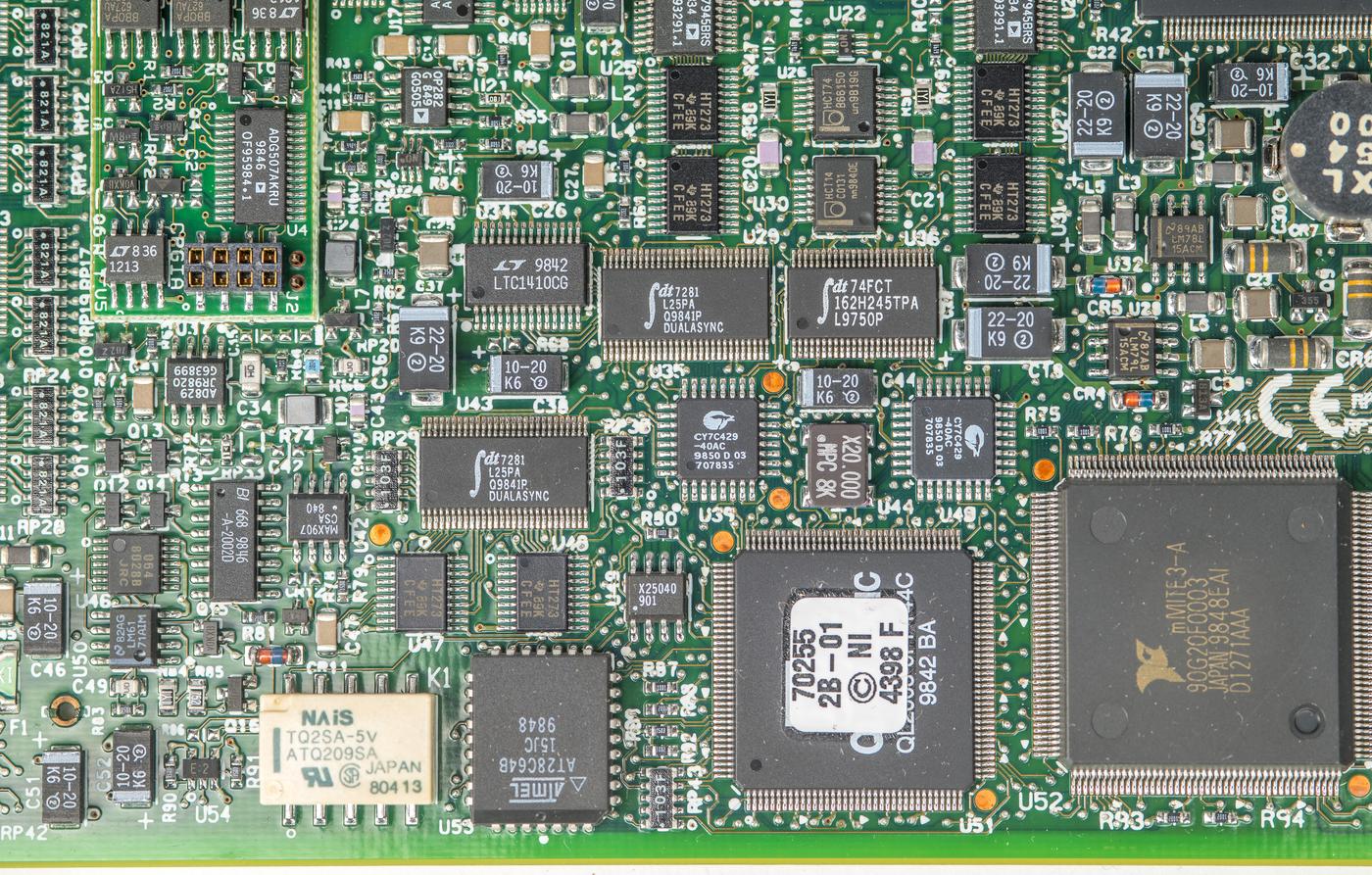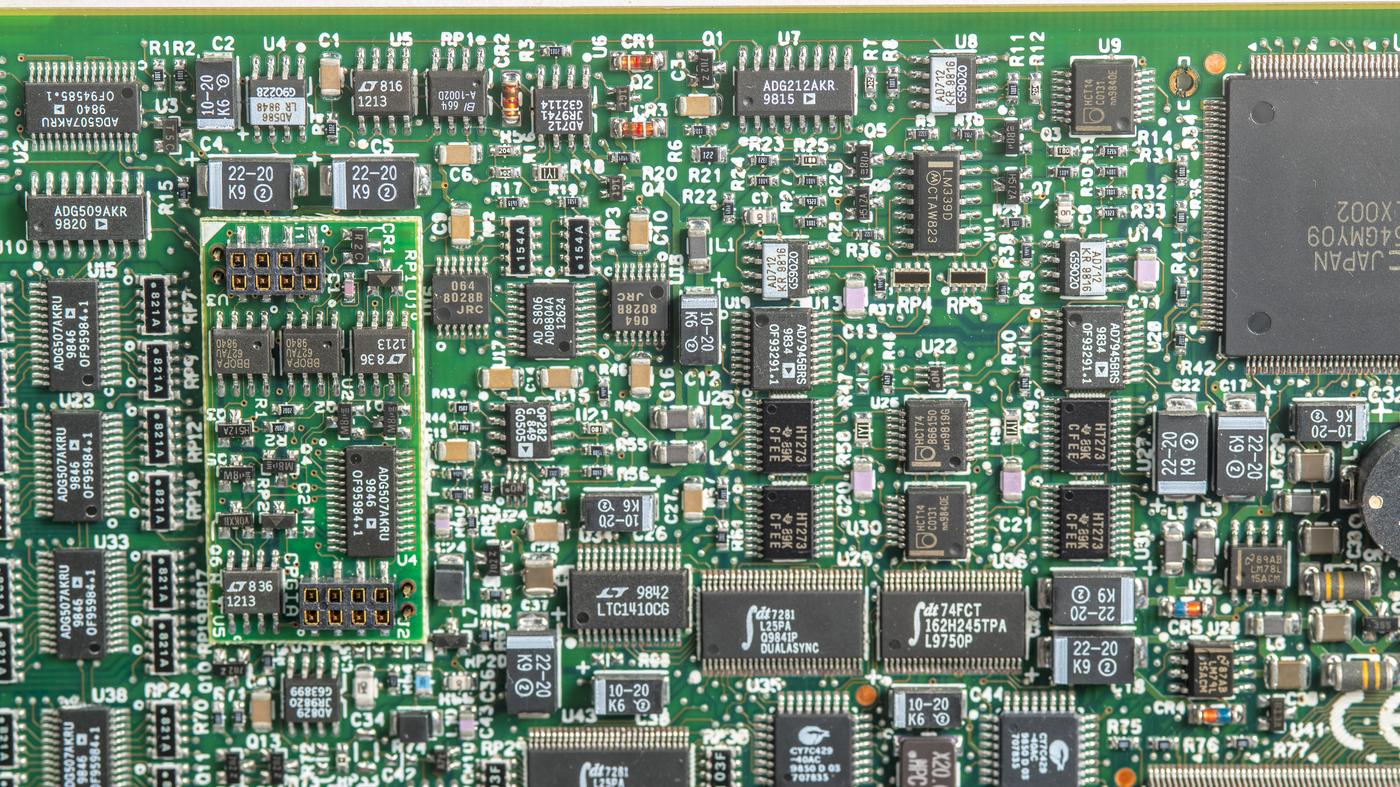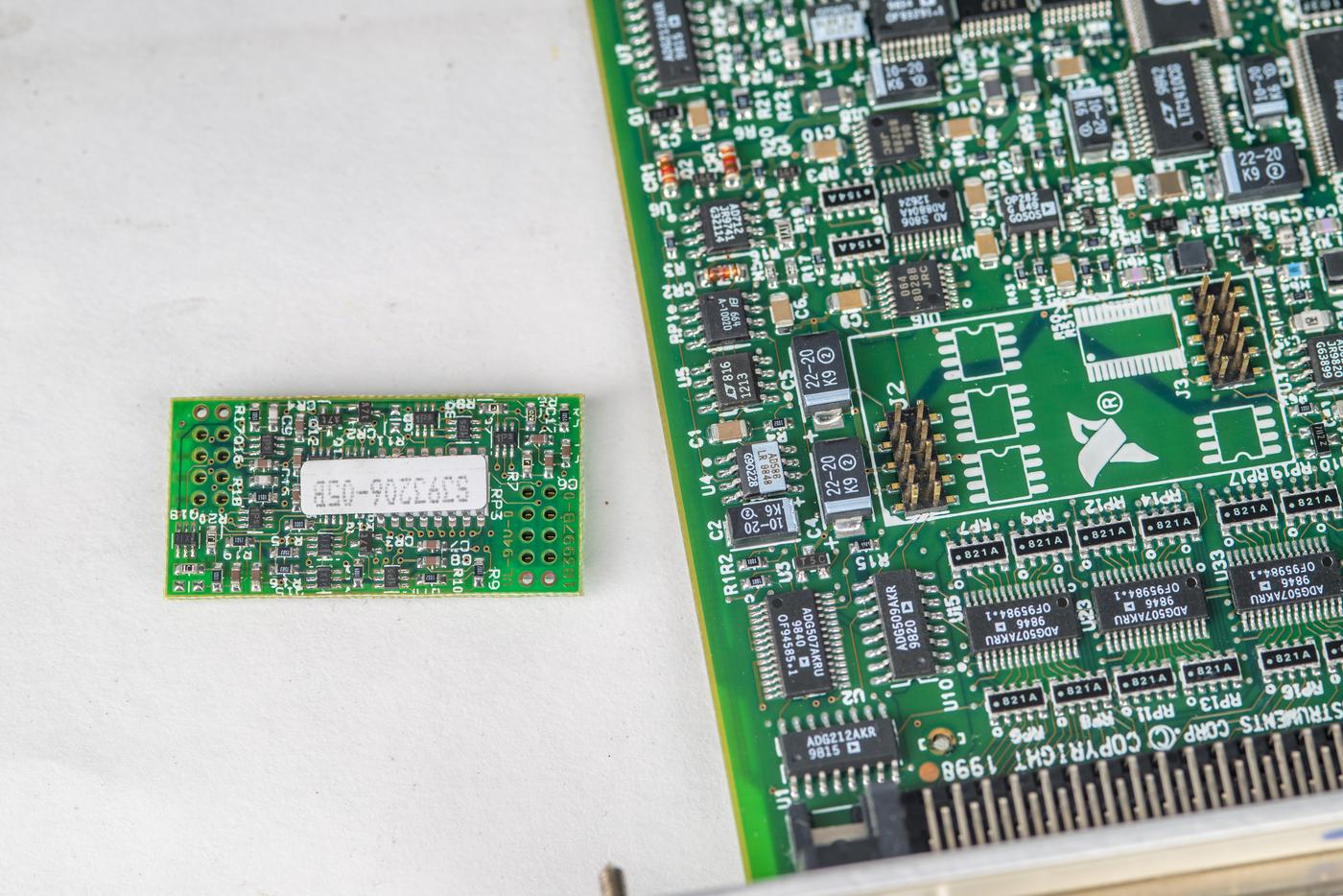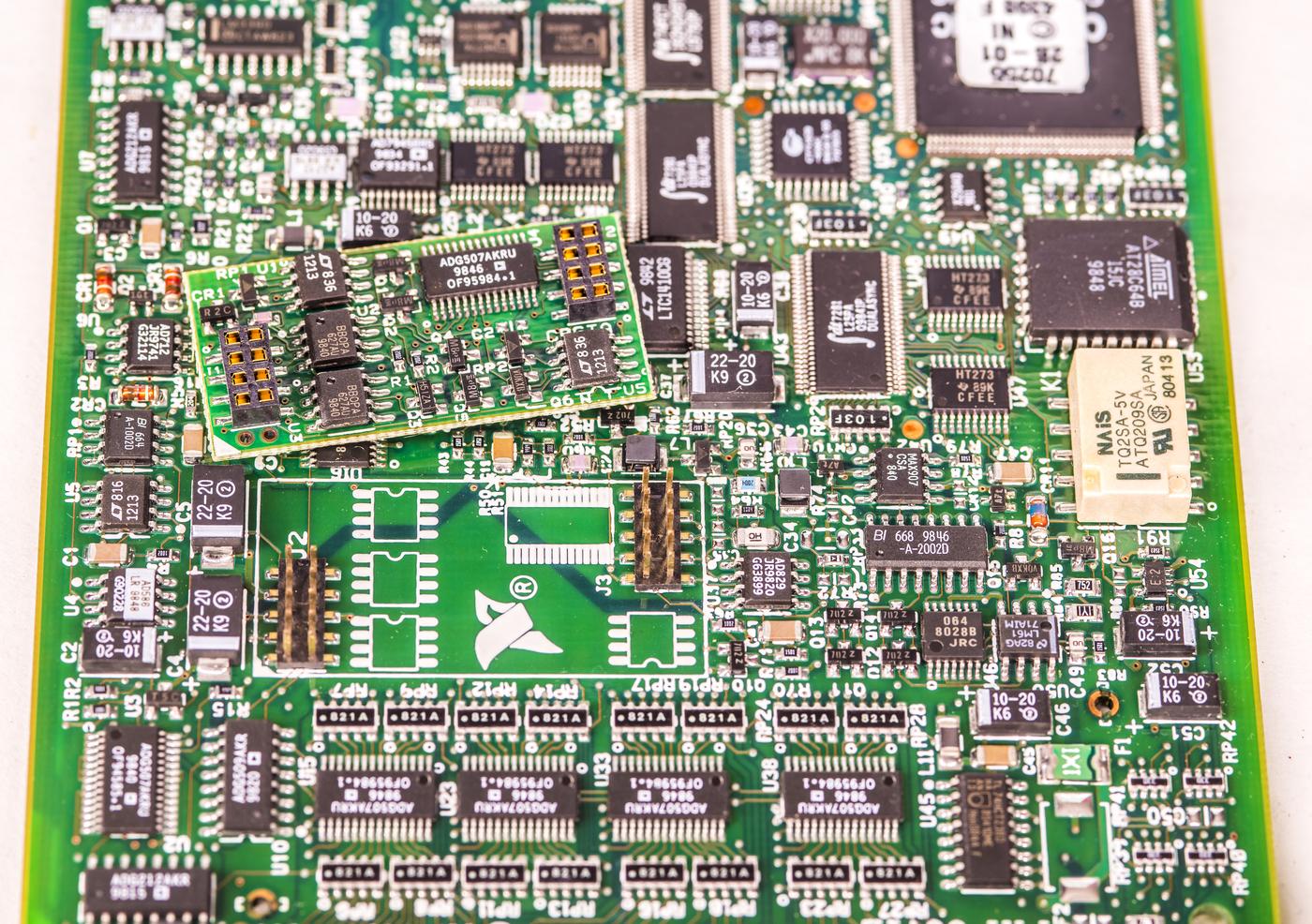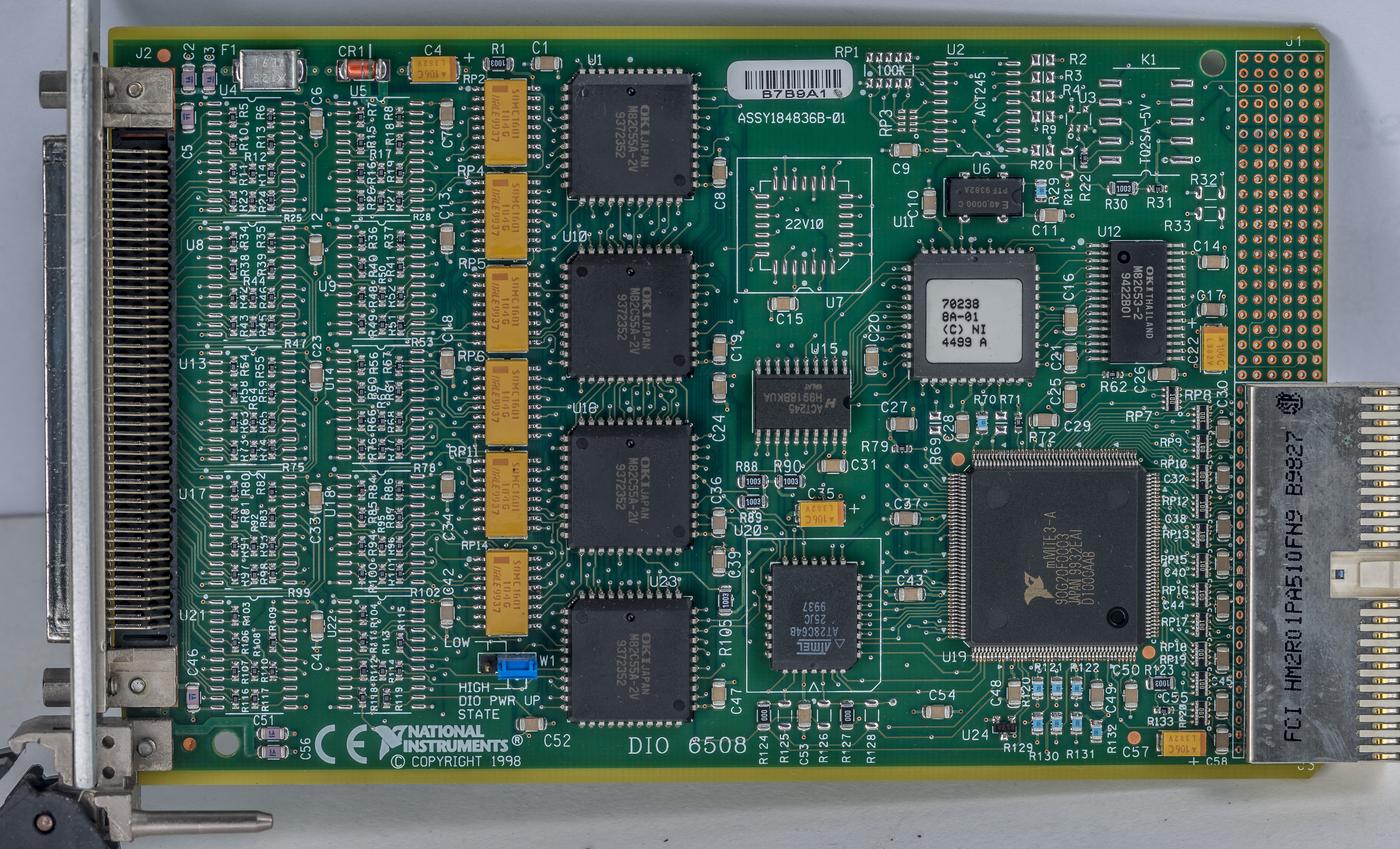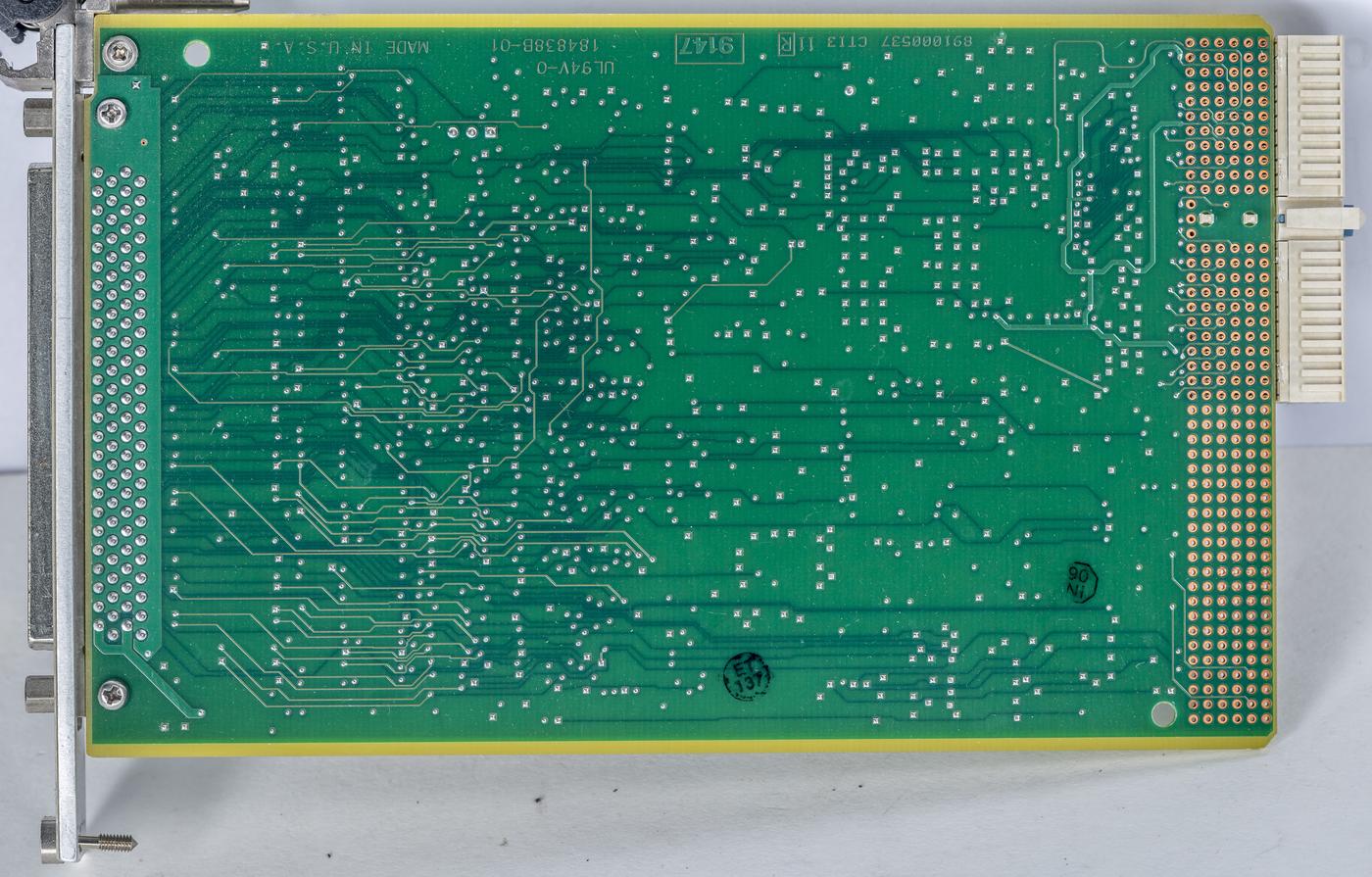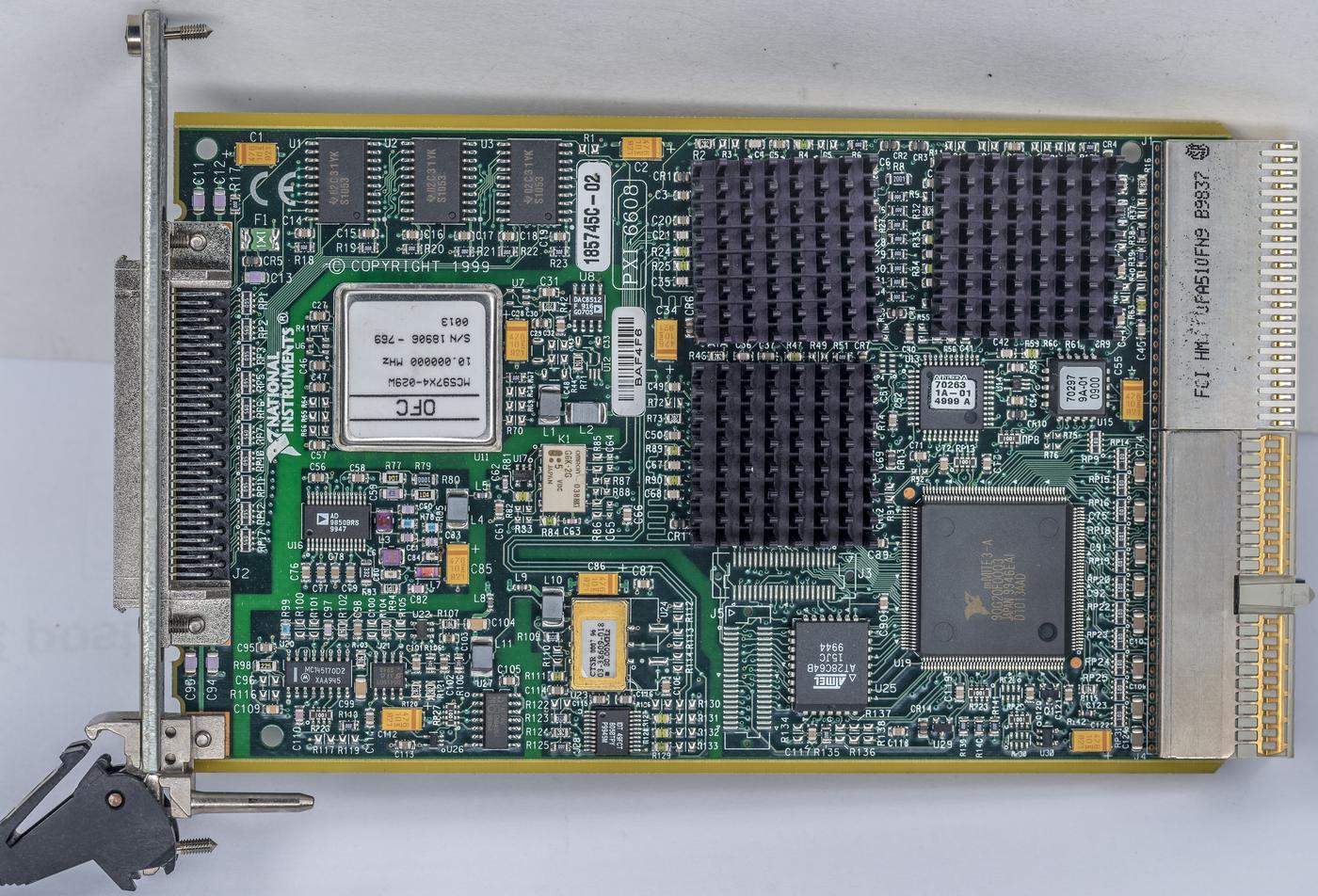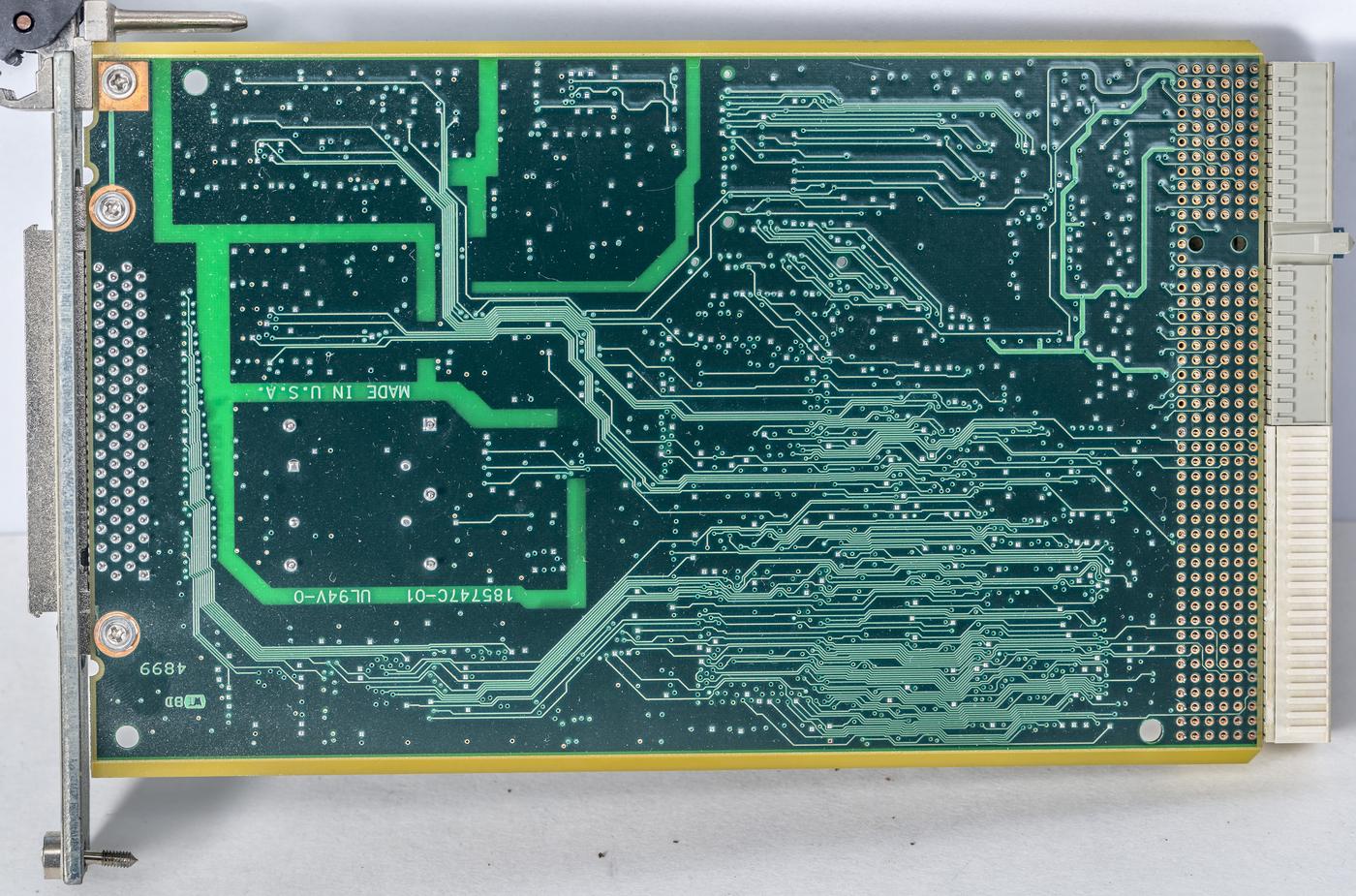Our friend Ken sent some old broken National Instruments PXI chassis for tear-down and photo-shoot. Here it is in the glory bundled with some cards.
Hardware and software around PXI and modern PXIe are part of embedded instrumentation with modularity and flexibility in mind. One could have whole lab set of instruments packed into single compact half-rack or full rack 19” enclosure. Typical add-on cards include digital and analog I/O interfaces, power supplies, signal generators, signal analyzers, RF and timing modules and even complex instruments like vector network analyzers. Many different vendors make hardware that is compatible with PXI/PXIe systems.
This PXI-1000 chassis however is very old, so we can take it apart and look at what’s inside.
Chassis powered by integrated power supply unit which accepts mains and provides all internal DC voltages for backplane, computer and cards.
It has two fans, power switch and nasty foam filters that are half-apart already.
Fans can be switched to run high or low speed. There is also DB-9 connector at the back, perhaps for some auxiliary signals? It’s not marked as RS-232.
Power supply connects to backplane with high power blade hot-plug connector and DB-9 internal connector. When powered this PSU draws 0.5W and nothing else happens.
PXI-8156 Embedded controller
This module is essentially full-blown x86-based computer designed into small PXI card form-factor. PXI computers are compatible with PXI chassis and PXIe compatible with PXIe ones, but mixing is not acceptable due to different interfacing and connectors.
PXI card plugs into chassis with high density multi-row backplane connector. These connectors are press-fit into PCB and not soldered.
There is 2.5” parallel IDE 4GB hard-drive, 3.5” floppy drive and interface PCBA mounted in neat assembly.
Model 8156 equipped with ancient Pentium MMX P55C processor running at blazing fast 175 MHz and talking to 64 MBytes of DRAM.
Not much else happening in there in terms of design. Some steel parts got some rust due to exposure to ambient humidity.
One can even find badly bulging ST M4T28-BR12SH1 SnapHat lithium battery mounted on top of NVRAM chip.
Perhaps it’s for onboard RTC clock?
PXI-2590 1×4 1.3 GHz multiplexer
PXI-2590 is RF switch that uses non-terminated high-bandwidth relays. It has 4 channels, each with maximum 1.3 GHz bandwidth for use in automated RF measurements. This switch module is designed to switch signals from DC to 1.3 GHz, with a characteristic impedance of 50 Ω.
The relays utilized in the construction of this module are the electro-mechanical, non-latching type, featuring 15 ms typical operating and release time. The contact material of the relays is Gold-clad silver. The relays are designed to last 5,000,000 mechanical and 100,000 electrical cycles.
The NI PXI-2590 offers 24 V maximum switching voltage (channel-to-ground and channel-to-channel), 1 A maximum switching current, 1 A maximum carry current, and 24 Watts maximum switching power.
In the initial phase of the relay’s life, the DC path resistance remains <0.1 Ω. It rises gradually and a maximum of >1 Ω could be expected at the end of the relay’s life. Each channel and common connect to module with 5 x SMB jacks as I/O connectors.
I didn’t bother to de-solder shield cans around relays as it looked quite elaborate due to heavy copper plane on RF switch PCB daughter-card.
Relays are driven by typical ULN2003A driver chip.
PXI-6071E Multi-function I/O card
The NI PXI-6071E is a PXI Multi-function DAQ module. It has 64 single-ended or 32 differential analog input channels with an input resolution of 12 bits, and a maximum sample rate of 1.25 MSPS, 2 separate analog output channels with a resolution of 12 bits, 8 digital I/O channels with a 5 V/TTL compatibility, FIFO buffer size of 512 samples, and 3 DMA channels. Physical interfacing is done with a 100-pin female 0.050 D-type connector.
Half of the module is covered by large metal shield, soldered to PCB in three points.
Back side of the card populated with decoupling capacitors in 1206 size as well as few 74ACT02 logic chips.
After shield removal we can see pretty busy layout with plenty of mixed signal chips.
External connector signals are multiplexed with set of four 8-channel multiplexers from Analog Devices, P/N ADG507AKRU in TSSOP. Few more of them are scattered around elsewhere, as well as ADG509AKR, ADG212AKR.
Large QFN in the corner are digital control logic chips surrounded by CY7C429-40AC chips, 20 MHz oscillator, AT28C64B memory and IDT7281 FIFO ICs. LTC1410 is 1.25 MSPS sampling ADC with 1 LSB INL and ±2.5V bipolar input range.
Analog Devices AD7945BRS are 12-bit MDACs with 0.5 LSB INL and best output settling time 600 ns. There is also interesting module mounted on the main PCB with two 2.0 mm pitch connectors. This module has two LT1213 op-amps, two pretty expensive Burr-Brown OPA627AU, one ADG507AKRU and few more discrete chips on both sides. NI put nice silkscreen on main PCB to show proper orientation for module installation too.
It must be a challenge to pack all this hardware into predetermined form-factor :)
PXI-6508 Digital I/O
This card provides 2.5 mA, 5V TTL/CMOS, 96 channels of Digital I/O. This module is created for high-performance, reliable data acquisition and utilizes four 24-bit PPIs. Each of these four programmable peripheral interfaces (PPIs) can further be divided into three 8-bit ports. The PXI-6508 comes equipped with a 0.050” series D-type, 100-pin female I/O connector.
With 6508 the user can achieve 2-wire handshaking, interrupts, programmed I/O data transfers, and transfer rates up to 50 Kbytes/s with NI-DAQ Software.
This module is designed for 5 V TTL/CMOS I/O signals and offers 96-bit parallel DIO interfaces for PXI, PCI, and ISA. Each of the PPI control 24-bits of DIO. It has a digital input voltage range of -0.3 V to 5.3 V and an output voltage range of 0 V to 5 V.
PXI-6608 System Timing
5 V, 8-Channel, Precision Reference Counter/Timer Module is a high-precision counter/timer module that performs a wide variety of counter/timer tasks, including encoder position measurement, event counting, period measurement, pulse-width measurement, pulse generation, pulse-train generation, and frequency measurement.
It features a 10 MHz oven-controlled crystal oscillator OCXO made by OFC, MC597×4-029W, eight counter/timers, digital de-bouncing filters, and TTL/CMOS-compatible digital I/O.
Timing DDS is implemented around Analog Devices AD9850BRS rated for 125 MHz and providing 0.0291 Hz resolution.
Sadly this PXI-1000 chassis does not power up, so I was unable to see if software is still on the computer and how easy it is to operate any of the cards.
Discussion is very welcome thru comment section or at our own IRC chat server: xdevs.com (port 6010, channel: #xDevs.com).
Projects like this are born from passion and a desire to share how things work. Education is the foundation of a healthy society - especially important in today's volatile world. xDevs began as a personal project notepad in Kherson, Ukraine back in 2008 and has grown with support of passionate readers just like you. There are no (and never will be) any ads, sponsors or shareholders behind xDevs.com, just a commitment to inspire and help learning. If you are in a position to help others like us, please consider supporting xDevs.com’s home-country Ukraine in its defense of freedom to speak, freedom to live in peace and freedom to choose their way. You can use official site to support Ukraine – United24 or Help99. Every cent counts.
Modified: April 15, 2024, 2 p.m.

